PG. 22
The Summer For Girls, By Girls
A Less–than–Holy Union PG.


PG. 22
The Summer For Girls, By Girls
A Less–than–Holy Union PG.


With more than 30 shops, 40 restaurants, and 15 sports and culture venues, we’re giving you 85+ reasons to stay in University City. With spring on the horizon, SHOP PENN joins a host of conversations on health and wellness, with a little help from hot spots and hang outs revitalizing the way the Penn community and beyond eats, moves, and lives.
Shop Local.
Shop Penn.
#SHOPPENN
@SHOPSATPENN

Penn’s new club for teacher hopefuls is a lesson in community–building, as they work to create a sustainable future for education.

From comedy to faith, this Penn senior is always looking for new ways to create community.
Penn's free wall is revolutionizing campus climbing.
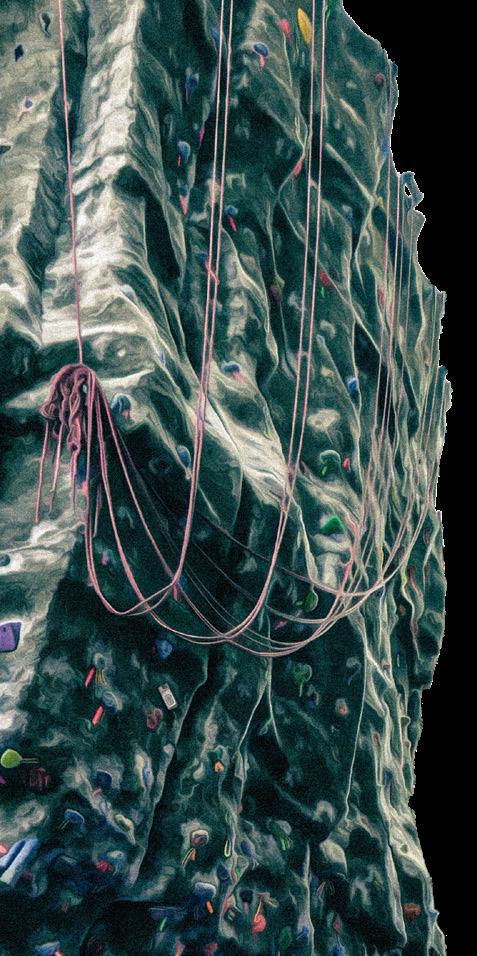


Cultivating love and community with Philly’s inaugural Bookstore Crawl.
A look at how Philly is adapting to a new mental health emergency hotline.
The Land is Inhospitable and So Are We is primitive, perverse, intense, honest, and the singer’s most cohesive record to date.
The studio has the movie world in its hands and is making all the wrong moves with its new surge of power.
This month's Street takes a look at the underside of college education. Much like the underside of this Williams' desk.
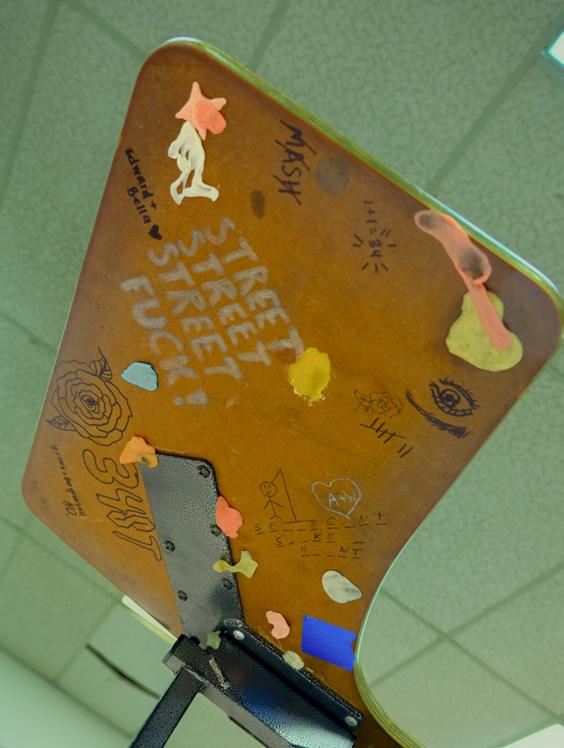 By Abhiram Juvvadi
Gum Chewed by: Walden Green, Collin Wang, Norah Rami, Insia Haque, Wei-An Jin, Ani Nguyen Le, Sophia Rosser
By Abhiram Juvvadi
Gum Chewed by: Walden Green, Collin Wang, Norah Rami, Insia Haque, Wei-An Jin, Ani Nguyen Le, Sophia Rosser
The merger between Saint Joseph’s University and University of the Sciences poses big questions about the clash of religion and science, but its impacts for students and faculty have been painfully tangible.
You have the senior slide, the cataclysmic breakdown of some friend groups, and the forging of new bonds that feel like they could last forever. A deluge of camaraderie and legally purchased liquor can melt some (but not all) of the grudges powered by the treacherous climb of student leadership and, of course, the toxic gossip train. But for me, senior year mostly means one thing: I’m not the young talent anymore.
I remember when Arielle (print czarina, strommy to my straddy, pictured below) and I were christened as such. It would’ve been the fall of 2021—our first semester as editors—and then–EIC Beatrice Forman who remarked that we were the babies of the room. But we weren’t the “frosh”; we were the new blood, the wunderkinder, the youth voice.
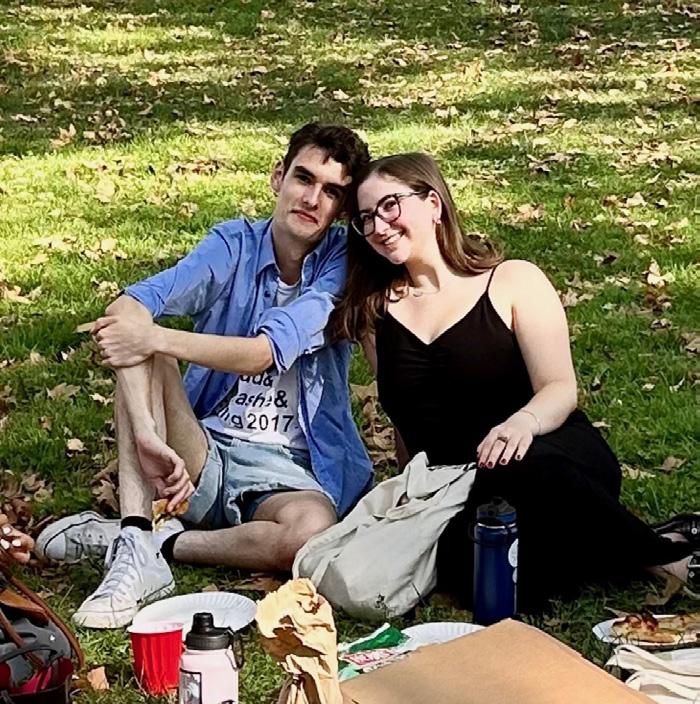
Back then I would’ve told you that Bea wasn’t being serious, but Arielle and I took that mantle to heart anyway. When we banged out our letters of intent in a high rise lounge, blasting “Goodbye Horses” on repeat, we were the young talent. And when we assumed our place at the helm of this magazine last December, it was the young talent takeover.
And now that I’m in her shoes, I know exactly what Bea was doing. In the following years, I’ve seen the faces of many soon–to–be successors light up with the same expression that I’m sure crossed mine, when a peer they admired lit up something in their brain: an expansion of the possibilities you envision for yourself. It wouldn’t be crazy to say that Bea’s casual tidbit of praise is the reason I get to be here writing this letter at all.
Lately, I’ve been thinking a lot about legacy. When I depart my position in a couple of months, how will the quality of my tenure be judged? Through the issues we’ve published, or the Instagram followers we’ve gained? Personally, I hope that the best testament to the work I’ve done will be the Strexec board that succeeds me. Because yes, Street is a real magazine, and we treat ourselves as such, but we’re first and foremost a teaching publication.
In this issue of 34th Street, we talk about the
educations that our colleges don’t give us. Of our pair of features, one details a fraught merger between two local universities that’s left students feeling robbed of their degree, while the other shines a spotlight on Penn undergrads trying to fill a gap in their own college’s curriculum.
Another gap in Penn’s major offerings: journalism, which is why you’ll often hear the DP referred to as the University’s “unofficial journalism school.” I learned how to become a writer and editor here, and for a long time I got to feel comfortable being the student. But now I’m the older generation; I’ve become the teacher. People even email me as “Mr. Green,” double–checking to make sure that I’ve received their applications to write for us.
Part of me loves when they double–check, because it makes me feel like I’m doing my job right. I want Street to be a place where people want to be, where a new generation of young talent can grow up until they’re old and washed up (but in a good way), just like me.
Walden Green, Editor–in–Chief green@34st.com

Arielle Stanger, Print Managing Editor stanger@34st.com
Alana Bess, Digital Managing Editor bess@34st.com
Collin Wang, Design Editor wangc@34st.com
EDITORS
Avalon Hinchman, Features Editor
Jean Paik, Features Editor
Natalia Castillo, Assignments Editor
Kate Ratner, Assignments Editor
Anna O'Neill–Dietel, Focus Editor
Naima Small, Style Editor
Norah Rami, Ego Editor
Hannah Sung, Music Editor
Irma Kiss, Arts Editor
Weike Li, Film & TV Editor
Rachel Zhang, Multimedia Editor
Kayla Cotter, Social Media Editor
THIS ISSUE
Julia Fischer, Copy Editor
Deputy Design Editors
Wei–An Jin, Ani Nguyen Le, Sophia Liu
Design Associates
Insia Haque, Katrina Itona, Erin Ma, Janine Navalta
STAFF
Features Staff Writers
Katie Bartlett, Delaney Parks, Sejal Sangani
Focus Beat Writers
Leo Biehl, Dedeepya Guthikonda, Sara Heim, Sophia Rosser, Rahul Variar
Style Beat Writers
Layla Brooks, Emma Halper, Alexandra
Kanan, Claire Kim, Felicitas Tananibe
Music Beat Writers
Kelly Cho, Halla Elkhwad, Ryanne Mills, Olivia Reynolds, Mehreen Syed
Arts Beat Writers
Jojo Buccini, Jessa Glassman, Eyana Lao
Film & TV Beat Writers
Mollie Benn, Kayla Cotter, Emma Marks, Isaac Pollock, Catherine Sorrentino
Ego Beat Writers
Sophie Barkan, Noah Goldfischer, Ella Sohn, Vikki Xu
Staff Writers
Morgan Crawford, Heaven Cross, Angele Diamacoune, Rayan Jawa, Enne Kim, Jules Lingenfelter, Luiza Louback, Dianna Trujillo Magdalena, Yeeun Yoo
Audience Engagement Associates
Annie Bingle, Ivanna Dudych, Yamila Frej, Lauren Pantzer, Felicitas Tananibe, Liv Yun
The Land on which the office of The Daily Pennsylvanian stands is a part of the homeland and territory of the Lenni-Lenape people. We affirm Indigenous sovereignty and will work to hold the DP and the University of Pennsylvania more accountable to the needs of Indigenous people.
CONTACTING
34 th STREET MAGAZINE
If you have questions, comments, complaints or letters to the editor, email Walden Green, Editor–in–Chief, at green@34st.com You can also call us at (215) 422–4640.
www.34st.com © 2023 34th Street Magazine, The Daily Pennsylvanian, Inc. No part may be reproduced in whole or in part without the express, written consent of the editors. All rights reserved.
We met each other at the smoothie truck in front of the Quad. I was squinting at the menu, attempting to rationalize the $6 avocado smoothie, and you were behind me, calling your best friend, bouncing on your heels. The sun made it unbearable to look at another person, and I pulled my hood strings tighter, hoping to avoid both the rays and your eyes.
And then we met at the Asian food truck next to the DRL crosswalk, and we both ordered unadon bowls, and we laughed at
Ships that pass in the night, and speak each other in passing,
Only a signal shown and a distant voice in the darkness;
So on the ocean of life we pass and speak one another,
Only a look and a voice, then darkness again and a silence.
Henry Wadsworth Longfellow “The Theologian’s Tale”the coincidence, the unexpected collision. I noticed you then. Our laughs held the same pitch, the same beat-too-long length. And then the halal cart on the sidewalk across Meyerson. And then the MexiCali truck across Perry World House.
And then we didn’t meet. We passed each other over and over, entangled in nostalgia for familiar food, for home. I know you saw me—I saw myself in you—and your eyes, which, if I had thought to concentrate, looked like milk from the moon, cratered with brown—your slight smile perched constantly, reflexively.
But that was all I saw: myself in you.
WHAT IS A VOICE? Didactically, a voice is a sound produced by vertebrates by means of lungs, larynx, or syrinx. A right of expression. Abrahamically, the only voice that matters is the voice of God. Falling from the sky, the listener cannot identify the source— only that they can hear and that they can understand.
A voice hyphenates one’s self, separating and connecting two distinct, indistinguishable identities: the speaker, the body. I know

your voice, but I do not know your body. This incorrect sequential order is an almost incomprehensible way of knowing, but it works for us because we do not need to know each other. We are separated by the darkness called unknowing, a congruent blindness to each other’s existence and importance.

Then, how do I know your voice? You speak the language I understand. Cognitively, that is how anyone recognizes another’s voice, the recognition of context and language-meaning-making. The context: your love of Walt Whitman. The language: you sing the body electric. The meaning-making: poetry. I close my eyes when I hear your poems, each one fracturing you into another knowable person. You crowd the stage at every speakeasy, every open mic,with poems meant not for the stars but for each small, semantical gaze.
The stars have not stopped burning, but they will, says the linguist. The stars have not stopped burning, but they live for you, says the poet.
I stand outside the door, your voice unfolding from the loudspeaker. Your voice falls from the sky.
DID YOU KNOW? I almost took the same obscure Korean history class as you until my friend convinced me to switch it with a gen-ed, “something useful.” In one year, you’ll take that gen-ed, and I’ll finally add that Korean class to my cart, satisfied that I’m not missing out on something crucial, something irrevocable.
And when you stopped running to City Hall every Sunday morning, I started two weekends after, determined to lose the latenight mukbangs of Spam with rice and ramen and tteokbokki. Instead, you slept in longer, knowing that your Saturday nights were now filled with her.
I met her at a party, actually. She brushed behind me, her hand suddenly on the small of my back, and her eyes were made of the eight planets, each one orbiting, slightly levitating as she craned her head back and drank
the hazy light from an underwhelming disco ball. We passed each other, but less unknowingly. She carried some of me to you—the imprint of my back, our brief clasp as she glittered. We speak to one another. Why weren’t you there?
How do you know someone through another? All I saw: her in you.
All the near misses that we gathered between.
At your last poetry reading, I lingered a few minutes longer than usual. I was jarred by your opening line, that it’s possible to know someone through memory alone. How the self is more susceptible to being known than we might like. Do I know you? Are you who you write outwards? After you finished greeting everyone, you tilted towards the exit, the room still perfumed with your voice. I caught your arm. “Thank you,” I started. “I’ve gone to three of your readings, and I’ve never regretted it.”
“Of course,” you responded. “I appreciate you being here tonight.” A hesitation. “Do I know you from somewhere?”
I shook my head. That was the truth, wasn’t it? We didn’t know each other at all; maybe the few encounters at the food trucks, but we missed each other too many times. Had I known you, I would have memorized every line of your poem, and you would have traced me with your pencil and performed me in your readings. All you saw would have been me, the subliminal weight of consciousness continually bearing down. Forever existing in your peripheral. Having been found, you would always search for me.
But we live in near misses. We strayed from the operative narrative of accidents; we didn’t find each other. Limited by time and linearity and care, we passed each other, over and over. And it’s okay, and it doesn’t really matter. We live in transient nonexistence, in love without knowing it, perpetually losing the person we never met and never became. k
Hometown Riverdale, N.Y.
Mask and Wig, Hillel, St. Elmo Club, Penn Alzheimer’s Buddies, research at Perelman School of Medicine
Sitting on the steps of the St. Elmo's chapter house on Locust Walk, Yoni Perla (C ‘24) smiles as he talks about the community he's created during his four years at Penn. Whether he's hosting a dinner at his frat or designing puzzles for people who text him on Shabbat, Yoni is eager to share his culture and faith with those around him and learn from them in return. As someone who "doesn't give a shit about musical comedy," yet is also a leader of Mask and Wig, he is always ready to hang out with friends and bring joy to others. But it's not just at his frat or in his clubs. He also volunteers as a companion for people with dementia as part of Penn Alzheimer's Buddies and hopes to continue bringing community and care for the elderly as a doctor after college. You can be sure to spot Yoni on Locust biking past with a big smile on his face.

You’re involved in St. Elmo, obviously [we’re sitting on the steps of the St. Elmo chapter house on Locust Walk]. Can you tell me about that?
Freshman year, we weren't on campus until the spring because of COVID. I was definitely struggling to find community and friends. I would say I'm a very outgoing person. It was easy for me to meet people, but [really developing] close relationships was something I struggled with freshman year when there was no constancy in anything.
Joining a group like Elmo helped because
From comedy to faith, this Penn senior is always looking for new ways to create community.
suddenly I had this network of people that I felt more intrinsically connected to. It felt like a really tight–knit group. Once I came back in the fall of my sophomore year, I actually lived in the house. That was an insane experience, living right on Locust Walk. Elmo’s is a really cool place. It's a place where I feel very comfortable and people are kind of free to be themselves.
Speaking of tight–knit groups—what made you decide to join Mask and Wig?
I joined fall of my freshman year, pretty much on a whim. This girl who had graduated from Penn told me it was a good community, something she thought I would like. I did some studio art before coming to college. It was just like one of my hobbies, so I wanted an outlet for that. But more so I was just looking for a fun group of people.
And did you find that kind of community?
One hundred percent. The crew is really fun. I often say, "I don't give a shit about musical comedy." I'm kind of there to hang out with my friends, mess around in the shop, and also to put on a cool production. There's something really nice about putting on a show, a thing that people can come and enjoy and watch. And I had a part in doing that. It's definitely a gratifying experience. But theater is not at all a passion of mine. I like to build, and I like to kind of hang around with the people that I build with. And also the broader company. Mask and Wig is divided into four sections, but we very much operate as one club.
Is there a particular moment that encapsulates the experience of the group for you?
One of the highlights of Mask and Wig every year is going on tour. My sophomore year, we went to Cancun. And I remember being on the bus and pulling up in front of the resort, and I was like, "What the fuck did I do to get here." I just kind of helped construct a pirate ship. I was drilling wood together and cutting wood and helping out with the show, of course, but it was a very surreal experience. Like, wow, I got to Cancun through my
college comedy group. This year, I had the opportunity to be one of the tour directors. That was a gratifying experience, giving other people that really amazing experience.
There’s some perks to being in a club that’s 150 years old. And thankfully we’re gender–inclusive now.
Mask and Wig went gender–inclusive last year, and you just welcomed new members for this year. As a senior member of the club, how does it feel to see those changes?
It's wonderful to see those changes happen. Those are changes that we really wanted as a club, and it’s awesome that we got to see [them] implemented. I would say that the company has only gotten better over my time here. Both in terms of talent and people. It’s fabulous.
You mentioned being part of the Orthodox Jewish community here. Could you talk more about your faith?
I come from an Orthodox family in New York. So I have Jewish schooling from nursery through senior year [of high school]. I spent a year post–high school in northern Israel studying Talmud philosophy up on a mountain on a kibbutz. All these things encapsulate that I definitely have a very strong background in Jewish religion.
Coming to campus, I wanted to be involved in bringing some of my faith to other communities that I was in. That was something that was really important to me: not limiting my Jewish practice or observance to just strictly Jewish spaces, like Hillel. I've often organized Shabbat dinners here for my fraternity. That's really cool because I get to now share this experience that I grew up doing every single week with people who have never done it before. And they can get a glimpse of the way I was raised. It also opens up conversations for other people to voice how they grew up, what their religious background is like.
That's something that's really nice, trying to make that religious identity more holistic, not trying to stay confined to one particular space. I also did external affairs stuff, interfaith work, for Hillel. I had such a close—knit community that I loved growing up in, but I
really wanted to expand beyond that and see how I could explore Judaism and my religious identity by interacting with people who are from different backgrounds.
I talked to a friend of yours from Mask and Wig, and he said I should ask you about how you observe the Sabbath.
Yeah, that’s a great point. Growing up, what [the Sabbath] meant was not actively using electricity on the Sabbath, sundown to sundown. It means you're not actively cooking during that time, trying not to work either. As much as I can, I've tried to strike a balance for that observance during college. Mask and Wig does a spring show round which is about ten weeks long, shows every Friday and Saturday night. As part of my Sabbath observance, I like to go to prayers at Hillel or host/attend some kind of Shabbat dinner on Friday nights. So, that would have conflicted with the shows that we do. The club has fully let me not do the Friday night shows and has been super accommodating. It's one of the things I definitely appreciate most.
Recently, I started doing something because a lot of people would text me over the Sabbath, and I wouldn't respond. It was totally fine that they were texting me, I didn't care, but like people would just forget that I wouldn't be responding for some time. So I set up an auto—response on iMessage, and I make a puzzle every week. Then when people text me over the Sabbath, it auto–replies with a puzzle for them to solve. So it kind of resulted in a funny outcome. Now, people actively text me over the Sabbath in order to get responses from me to get the puzzles.
Navigating faith as an adult is a really hard thing to do. It's complex. If I'm going to be off my phone from Friday to Saturday night, what does that look like in terms of studying, communicating with friends, responding to emails, just being an active member on Penn's campus? So that's the pragmatic side of navigating the identity.
It's also how comfortable I am just showing that side of myself, when that side is a bit of an anomaly. In a lot of ways, [coming to Penn] re-
ally strengthened my religious identity because I've learned that I could be really comfortable changing my observance. I've become a lot more confident in myself to express my religious inclinations or beliefs.
It’s also about trying to create community in whatever space I am. That transcends those religious spaces. Sometimes that's creating community through the religious means that I knew growing up—hosting a Shabbat dinner or Passover seder. But sometimes it's like, just what does it mean to create an active community? Cooking for friends, being a really social person, inviting people over to places. There's a lot of ways that you can create community that are just more basic human principles and don't necessarily stem from anything religious.
In a similar vein, how has Penn changed how you think about academics?
So I took a gap year after high school. I was at this school, Maale Gilboa, that was a yeshiva. There are no grades. You’re there just to learn. And somehow within that framework, I worked harder than I have any year of college, even though there were no external drivers. I put a lot of heart into it. The reason I'm bringing that up is coming into college, I wanted to remain flexible and passionate about learning in general. And I knew I wanted to eventually go to med school, so I already had the career angle going, but at the same time, I wanted to make sure that I was still kind of focusing on classes and learning for the sake of learning. In Hebrew, we call it learning lishmah. So freshman year, I took a lot of different courses, experimenting a lot. I changed my major probably five times over the course of my freshman and sophomore years.
job can mean very different things for different people, in terms of their financial background, what their family structure is like, where they see themselves in ten years. So I think I've become much more realistic. Maybe a little less romantic. I think that's probably the best way to say it: less romantic about college, and studying and learning in college. Medical school admissions does make it harder. I have not found myself to be as confident as I would have liked to be to kind of just take whatever classes I wanted, or maybe take more credits a certain semester, because I think I have become somewhat fixated on my GPA. And I know that stuff is something people in a lot of pre–professional tracks struggle with. But I find at least with med school admissions, it seems like they stress your grades more so than any other track. So it's a little frustrating. Some of the smartest people I meet here don't have particularly good GPAs. I truly believe that your grades say very little about you and your capacity to think.
What kind of work would you like to be doing in medicine?
I volunteer with Penn Alzheimer's Buddies.
Through that club, I've established a relationship with this man with early–stage dementia in a nursing home. I think that's been a really impactful experience for me, and I think it’ll continue to be in my medical journey, in some capacity. I want to definitely work with older patients. I think that's probably where we're failing most in the healthcare industry. As the population continues to age, generations are just getting older, and older people are living longer, but our brains aren't getting any better. Our bodies are living longer, but we're living with tons of ailments and not necessarily leading happy lives.
There are two things that I keep in mind for my career. One, the thing people mostly focus on, is what do you want to be doing? What kind of role–space do I want to be in? But the second question I ask myself a lot is, what do I have to offer? Like the question employers want you to answer, but for you to answer for yourself. What new things can I bring to this space? How do I contribute in some way? For me, I think it’s my ability to work with older people. I really actually enjoy that experience. And I think I have a knack for connecting with older people. ❋
Freshman year, I was more like, “I'm here to learn and obviously get a good degree, get a job, but I don't need to kind of fixate on the career stuff.” Over time, I've realized that at least for myself, your career is really important. And now I've definitely invested more effort in that. Everybody's coming from a different place. A certain career or certain
Favorite building?
Van Pelt fourth floor, music library room. It's beautiful.
Favorite place to eat on campus? My neighbors' house, on South 41st.
No skip album? The Lost Boy by Cordae.
Favorite movie? The Iron Giant
There are two types of people at Penn … The ones who love Locust Walk and the ones who avoid it.
And you are?
I actively choose to walk on Locust. I go out of my way.
“Learning for the sake of learning”—how does that fit into your current philosophy about college and what its goals should be?

which takes up an entire floor in Fagin Hall, she treats robot mannequins in renowned facilities that mirror real–life healthcare settings. “They act like normal patients! They have a pulse, heart rate, and blood pressure and can also give birth and report symptoms,” she says. After three years of training with this remarkable, state–of–the–art robot technology, Megan has mastered skills such as changing a chest tube drain and inserting a nasogastric tube.
But Megan's most valuable experiences occur outside the walls of Fagin Hall and in hospitals and clinics all around West Philadelphia. “I feel like I learn so much more being out in the hospital than I do when I'm in the classroom,” she says.
BY SOPHIE BARKANBorn with a congenital heart defect, Megan Laubacher (N ‘24) spent the first few weeks of her life in the hospital surrounded by medical professionals. Yet among all of the surgeons, pediatricians, and cardiologists, one group always stood out to Megan’s family: nurses.
“The best stories in the hospital came from my time spent with the nurses,” Megan says. Over two decades later, Megan’s family is still connected to the nurses who cared for her as a newborn, most notably the nurse who took Megan off the plane when she was airlifted to a different hospital.
“I wanted to be able to give back and do the same for others,” Megan says of her choice to apply to nursing school. Now, Megan is a senior at the School of Nursing, Penn’s smallest undergraduate school with just over 100 students per class. This spring, Megan will graduate with a bachelor of science in Nursing with a minor in health service management.
While students across campus work tirelessly on problem sets and participate in class discussions, Megan is getting true “hands–on” instruction. At the Simulation Lab,
Throughout their time at Penn, each Nursing student will venture to various clinics in West Philly, in fields such as obstetrics, general medicine care, psychology, pediatrics, and community health. Megan will complete 800 hours of clinical practice by the time she graduates, shadowing nurses in these facilities and even having the opportunity to apply her knowledge and skill sets to real patients. This experiential learning culminates during their senior years, when students complete two 12–hour shifts of clinical practice per week in the field they hope to join post–graduation. “You work and feel like a real nurse in that situation,” Megan says.
With hopes of practicing pediatrics post–grad, Megan shares that she’s the happiest working at Children’s Hospital of Philadelphia. “I absolutely love the little kids,” she says.
While Megan rejoices in the unique connections she has formed with her patients at CHOP, she’s also been exposed to the underlying issues within the health care industry, especially in the mental health sector. Working at the Kirkbride Center, an alcohol and drug rehab facility, Megan noticed that the facility was underfunded and lacked a positive working atmosphere, which resulted in negative patient care. In spite of these difficulties, she sought to provide a support system for her patients.
Megan formed a connection with one patient in particular who only spoke Spanish and was unable to communicate with any
of the nurses. “I created these whiteboards for the patient, where his whiteboard was in Spanish and the nurses' whiteboard was in English. This way, they would communicate through a circle system: The patient could circle which medications he wanted, what symptoms he was feeling, or if he needed a blanket or food,” Megan says. “It was a very, very special moment that only a nursing student could get. It just felt so good to do that for somebody.”
Nursing has provided Megan with a community of like–minded peers and faculty who also love to support others. “We're all extremely collaborative. Every single time there's a test, there's people sending resources, study guides, and Quizlets. The faculty are really great, and they want to work with you,” she says. “Everybody wants to see everybody succeed.”
Throughout her time at Penn, Megan has explored her other interests through fun and creative outlets: She is a tour guide for Kite and Key, a tap dancer for Soundworks Tap Factory, and a member of Alpha Omega Epsilon, a pre–professional sorority for women in STEM. “I wouldn't do all these extracurriculars if I didn't enjoy them just as much as doing all these clinical hours. If you enjoy it, you find the time, and the work always gets done; it really does,” Megan says. “It’s a total change of pace from Nursing.”
Megan has been “pleasantly surprised” by Penn’s overall support, kindness, and positive energy towards nurses. “I feel like the Penn community as a whole really values having Nursing students in their organizations and in their social circles. Whenever I mention that I'm a Nursing student, instantly people light up and they're like ‘We love Nursing students, and we're so excited to have you here,’” she says.
After graduation, Megan plans on working for a year or two in a pediatric hospital setting, and then hopes to return to Penn to get her master’s degree as a nurse practitioner. “Eventually, I’d love to work in a family health center or even open my own practice,” she says. As Megan approaches her final year as an undergrad, she is just getting closer to changing people's worlds like the nurses she had as an infant. k
Inspired by her own medical experiences, this Nursing senior has made it her goal to give back and help others.Photo by Rachel Zhang
In the heart of the University of Pennsylvania's campus, a towering behemoth stands as a testament to Penn's commitment to the physical and social health of its students. It’s not the high rises, the Benjamin Franklin statue, or even the LOVE sign. It's a 40–foot rock wall that is bringing students together through problem–solving and introducing the best facets of climbing culture to Penn.
Walk into the airy lobby of the Pottruck Health and Fitness Center any weekday evening, and you’ll be met by the group of 25 or so people milling around at the base of the commanding climbing wall. There are veteran climbers, identifiable by their well–loved chalk bags, alongside completely new climbers, showing off their fresh callouses. Participants might tackle it by bouldering, in which they traverse challenging routes up to about ten feet and can fall onto the plush blue mats below. Others brave higher heights by top roping, in which they use a safety harness that allows someone at the base to belay them, ensuring that a misstep high above the ground won’t result in a fall. The atmosphere is upbeat and collaborative, with people at the base of the wall cheering on the climbers tackling an ascent or swapping tips and ideas for routes while recovering from a climb.
A visitor might mistake the large, close–knit group fostered at the climbing wall as a longstanding sight at Pottruck, but it’s relatively new. Previously, the rock wall might've seen five climbers, as opposed to the twenty–five it sees on
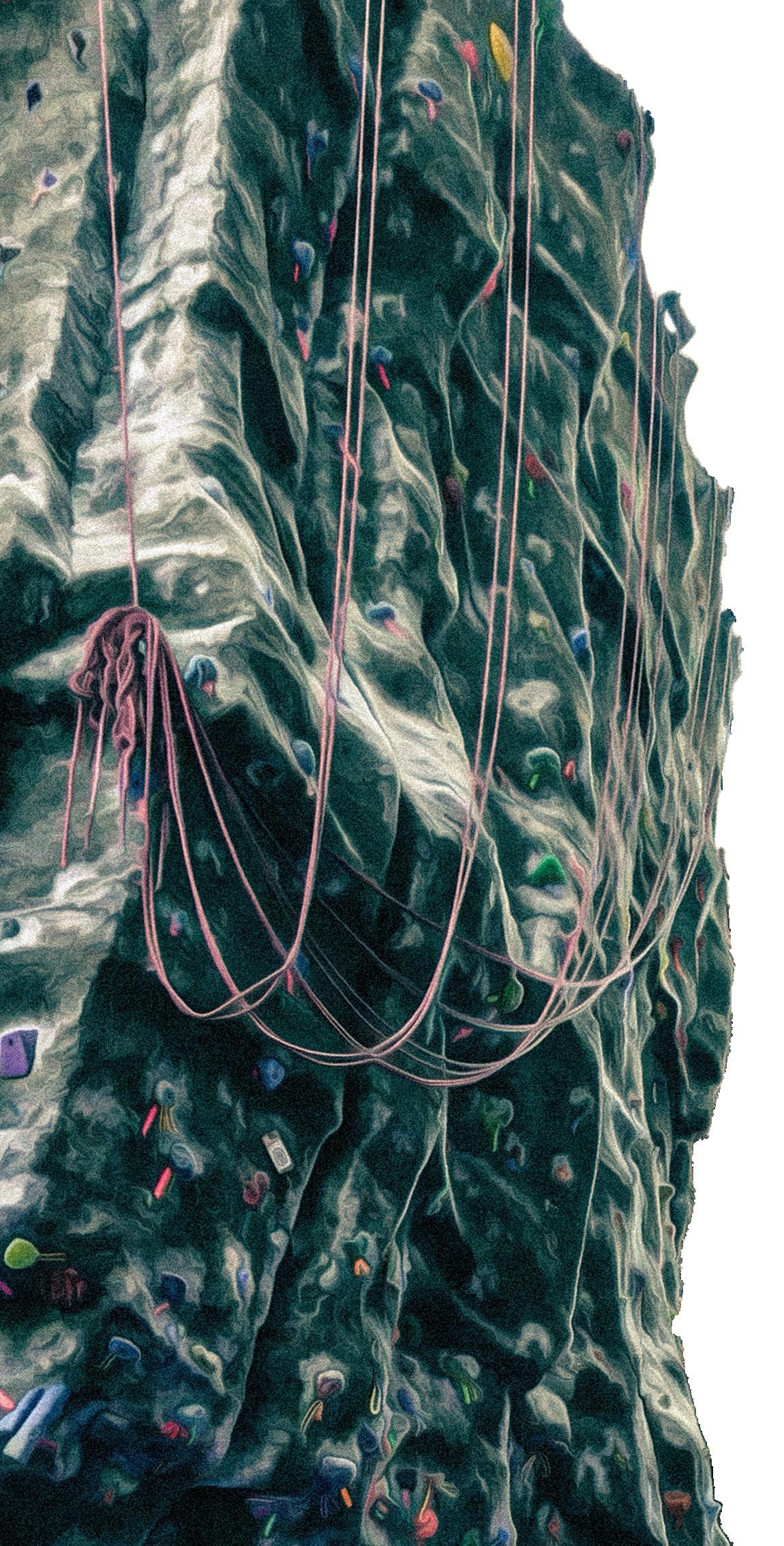
any given evening this semester. Before this year, it came with a price tag—a semesterly fee of $100, or a daily pass fee. The process to expand access to the wall started over a year ago with Scott Steiner, the assistant director of recreational facilities. He explains that the price of membership often deterred students who were curious about climbing but hesitant due to the financial barrier. “If you've never participated in it before, it can be intimidating, or you're not sure really where to start, and having to pay any money to get into that typically prohibits students from attempting or trying to do it.”
During the spring semester of 2023, Steiner worked to introduce "Free Fridays" for climbing at Penn, marking a shift in accessibility. The result was clear: Participation soared, and Fridays became the busiest days at the climbing wall. Scott Steiner reflects, "Using those metrics, we wanted to be able to say that if this becomes free for students to use, they will use it, and our participation will grow, and this amazing component of the facility will see more action and usage."
To accommodate increased demand and an influx of new climbers, Penn expanded its staffing and introduced a climbing wall orientation. The orientation offers an essential overview of the wall's unique features and vital safety tips. This approach ensures that even newcomers understand the safety measures involved. Staff members are belay–certified to assist those interested in top roping and provide guidance on bouldering routes. The climbing wall is no longer eye candy for visiting students or bait to prompt a comment about excessive university spending; it's a welcoming space for beginners and experienced climbers alike, used by hundreds each week.
David Feng (E '24), a climbing enthusiast and a senior in Engineering, got into climbing after realizing it complemented other outdoor activities. At Penn, he joined the climbing club and became an employee at Pottruck’s climbing wall. For Feng, climbing represents a fusion of physical problem–solving and a sense of flow with the added benefit of a supportive community. He explains that with climbing, “even if you don't know someone, you will kind of feel the urge to start cheering them on, like, ‘Come on, come on, let's go, you got this!’ Having that sense of community is something that a lot of people also really enjoy.”
After attempting a route, especially after the heavy exertion of bouldering, people will typically take a break on the mats. This naturally leads to chatting about everything from climbing to classes. “It really lends itself to community building. I think a lot of people have been able to make friends who they consistently climb with and who they’re able to see like every other day when they go to the wall,” explains Feng.
Penn's decision to offer free climbing has also coincided with climbing's breakout moment in popular culture. The Oscar–winning documentary Free Solo following Alex Honnold's awe–inspiring ascent of El Capitan without a harness catapulted climbing into the mainstream. Moreover, climbing's debut at the Tokyo Olympics in 2021 brought the sport to a global stage, capturing the attention of viewers and inspiring a new generation of climbers. While 30 years ago you might have been out of luck when looking for a climbing gym outside of a few key cities, you can now find multiple in any major urban center. In fact, it’s not unusual to hear Penn students discussing a recent trip to The Cliffs at Callowhill or Tufas Boulder Lounge.
But not every climber is thrilled with the rising popularity of climbing. Noteworthy is the influx of new gyms, many of them venture–backed chains with little personality. The newest rock climbing gyms are colorful and pristine with amenities like yoga classes and fully retrofitted weight rooms. Critics cite their flashy, Instagrammable (yet less than translatable to the outdoors) builds. This atmosphere isn’t helped by the trend of using the colors of plastic rock holds to denote routes for different levels. When compared to the older method of marking out routes with removable tape, routes denoted by single–colored holds decreases the variety of routes and make it difficult to switch things up. This brand of cookie–cutter gym can foster an undercurrent of competition and showmanship that veterans say is new to climbing gyms, with some bemoaning an end of the crunchy, offbeat community that older gyms cultivated.
While this may be true, climbing gyms were never oases of acceptance and accessibility to begin with. In fact, the sport had issues with inclusivity, representation, and cost inaccessibility long before climbing was a buzzword.
Climbing was and still is a largely cis–male–dominated sport. Outside Magazine cited Clemson University research findings that
only 1.5% of USA Climbing members and affiliates identified as African American and 4.7% as multiracial, indicating the vast disparity in the climbing community. Breaking into a sport in which few people share your identity is difficult. Outdoor travel writer Dakota Kim writes in the LA Times, “When you’re the only climber of color, you feel the weight of representing your race—and that feeling doubles when you’re queer, you’re not cis–male or when you’re disabled … The feeling of isolation can make you less likely to participate, and I’m saying that as an Asian American woman who often climbs with other women of Asian descent in her gym.”
The sport has a legacy of high barriers to entry—beyond the walls themselves. While outdoor bouldering is relatively low cost (just requiring a tank of gas to escape to the outdoors and an old mattress to substitute as a crash pad), indoor climbing or any type of top roping quickly becomes an expensive hobby. Monthly climbing gym memberships are as high as $50–$100 and a daily pass up to $30. Gear purchases stack up, with a pair of climbing shoes, which most gyms require, costing around $70–$120. Additional equipment for top roping adds up to around $280–$620. High costs can keep out prospective climbers who are apprehensive or unable to sink hundreds of dollars into a hobby.
In a refreshing departure from contentious elements of climbing culture, Pottruck is working to open up access to the wall. Not only is the wall available to every student and gym member free of charge, but general gear rentals such as shoes, harnesses, and chalk are completely free. The community welcomes novice and advanced climbers alike. The atmosphere is warm and collaborative, not cut–throat. Climbing paths are set with tape, allowing route–setters to create nearly infinite combinations for the new routes they routinely create.
Associate Athletic Director and Director of Campus Recreation Shelbi Long explains, “I think it's an important piece that when someone comes into the recreation center, they don't feel these barriers, financially or in any other way. That's what we want in Campus Recreation across the board.” Whether you're a seasoned climber or have never touched a climbing hold, Pottruck’s climbing wall and its vibrant community offers the perfect opportunity to scale new heights. k
Your grandma isn't the only one crocheting right now.
BY LUIZA LOUBACK Illustration by Ani Nguyen Le
Igrew up in a household where threads and crochet needles were omnipresent—nestled in the creases of the sofa, strewn across the kitchen table, and even making their way into the bedrooms. My mother is a natural crocheter. Over the years, I've carried her crochet legacy with me, even during my time at Penn. Her work has served me throughout my life, from bikini tops on family vacations to protective crochet Kindle cases and cozy rugs for my dorm.
Whenever someone questioned my mom's love for crochet, she'd promptly say, “It's an ancient art!” And she was not wrong. The history of crochet follows the history of
civilizations. The craft has gone through wars and revolutions and traveled to the four corners of the world, but the origins of this ancient art are still uncertain. Crochet, as we know it today, has its roots in the 16th century, and one of the most accepted theories shows that it began in the Middle East, reaching the whole world through Mediterranean trade routes.
Even though it is an old form of art, crochet is more modern than ever. From the coveted Prada Crochet Tote Bag that graces the arms of fashion–forward trendsetters to the crochet summer dresses that have become staples of warm–weather wardrobes, crochet is experiencing a renaissance on
the runways and in everyday wear.
Now, crochet has found a new platform to flourish, especially among young and creative individuals. What was once considered a traditional craft has evolved into a thriving non-traditional online community. Mahum (@mahumcrochets), a young crochet enthusiast, boasts an impressive following with 254.2K TikTok followers and 312K YouTube subscribers. Beyond her digital presence, Mahum is actively involved in promoting the accessibility of crochet art. She dedicates her time to teaching crochet courses for young children and teenagers at an independent art studio, fostering a new generation of craft enthusiasts.
In a YouTube video titled “How Crochet Changed My Life,” she says, “When I first came to Dubai and moved into my student dorm, I was aimless and directionless. I had no purpose, and I didn't know what to do with myself. From September to December, I did not leave my room except to go to university. But during that time period, I completely made a life for myself. I would stay, in this room, spending hours constantly working on my crochet pieces.”
Crochet can be more than just a hobby—it can also serve as a source of income. Social media platforms, online marketplaces, and crafting websites have provided many teenagers with the tools to turn their crochet creations into profitable ventures. Young crocheters are leveraging their skills to sell handmade items, share tutorials, and connect with a global audience.
The appeal of crochet as a source of income lies in its versatility. From fashion accessories and home decor to amigurumi (the Japanese craft of crocheting small stuffed toys) and custom designs, the possi-
bilities are endless. This wide range allows young crocheters to tap into niche markets and cater to diverse customer preferences. Also, the rise of sustainable fashion movements has further fueled the demand for homemade products. Consumers are increasingly drawn to unique, eco–friendly, and personalized items.
An example of this close–knit community at Penn is the Kelly Writers House Fiber Arts Circle, which welcomes anyone interested in crafting or learning fiber arts every Sunday—no experience necessary. Zuza Jevremovic (C '26), an active participant in the club says “the great thing about the KWH Fiber Arts Circle is its availability to all manner of fiber arts.” They also have a budget for members' personal projects and occasionally take trips to local fiber–arts–interest shops like Wild Hand.
They are currently working on a community blanket project. According to Zuza, “Helping to contribute to such an artwork is a great source of motivation to create.” Her interest in crochet began “in the home-
bound dullness of quarantine” and grew up into a bigger part of her life, even becoming a source of income: “It does mean a lot to have someone purchase something you created.”

Crochet has many benefits. Researchers have presented evidence that engaging in crafting activities can have benefits for emotional health. As Zuza says, “Put your fingers on some Bernat blanket yarn and see if it does not immediately improve your state of mind.” Crocheting, in many ways, mirrors some of the positive effects attributed to meditation, acting as a natural antidepressant. Studies have gone so far as to conclude that regular participation in crafting may serve as a potent defense against cognitive impairment.
This revival of crocheting stands as a testament to the power of craft and creativity in our increasingly fast–paced world. It reminds us that the simplest of art forms can provide solace in times of distress, offer an unexpected means of income, and bring people together, where connections are woven one stitch at a time. k
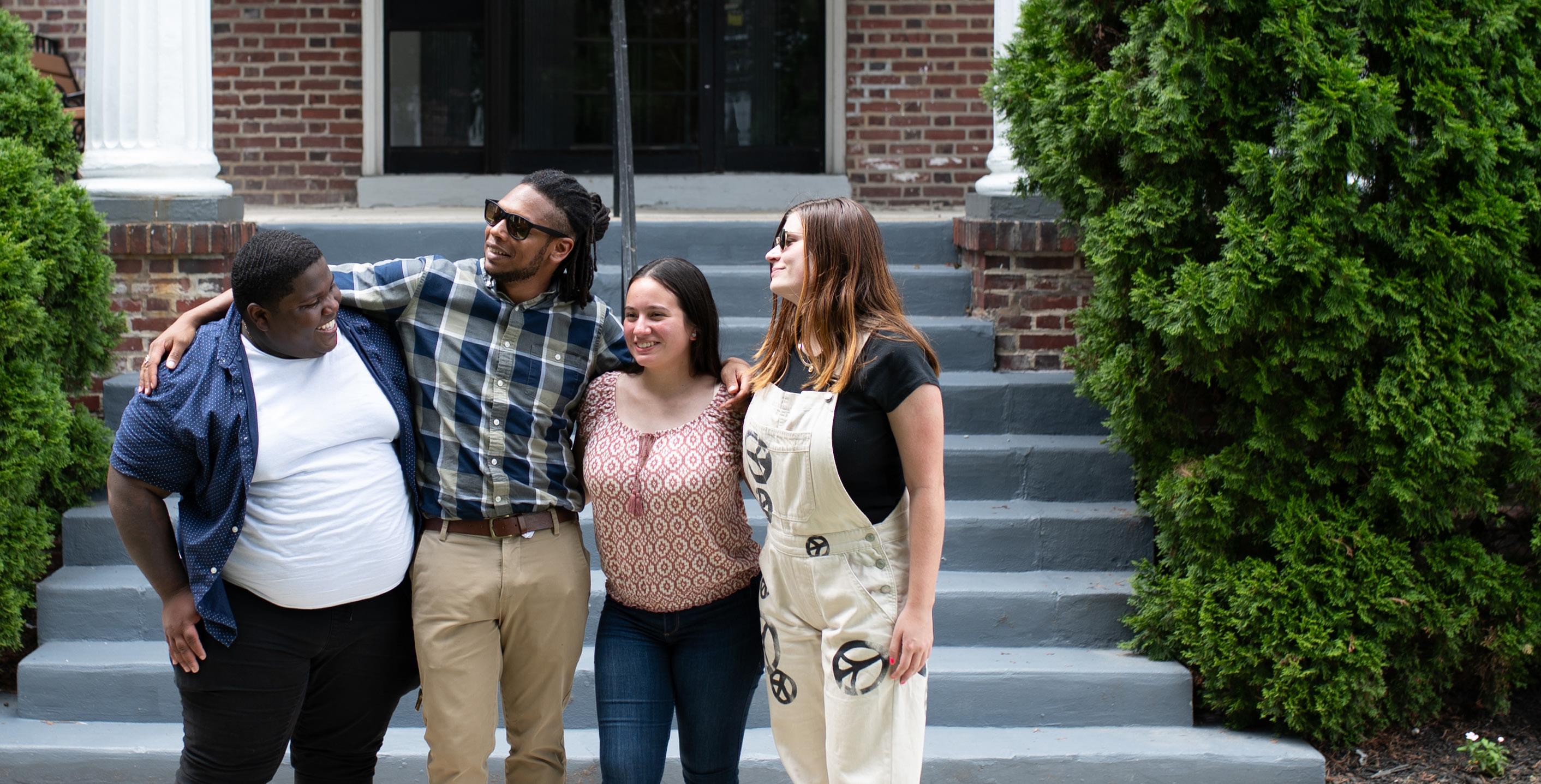
On Aug. 22, Philly had its very first annual Bookstore Crawl, where participating bookstores from across the city were able to cultivate a day dedicated to book sharing, book loving, and bookstore crawling.
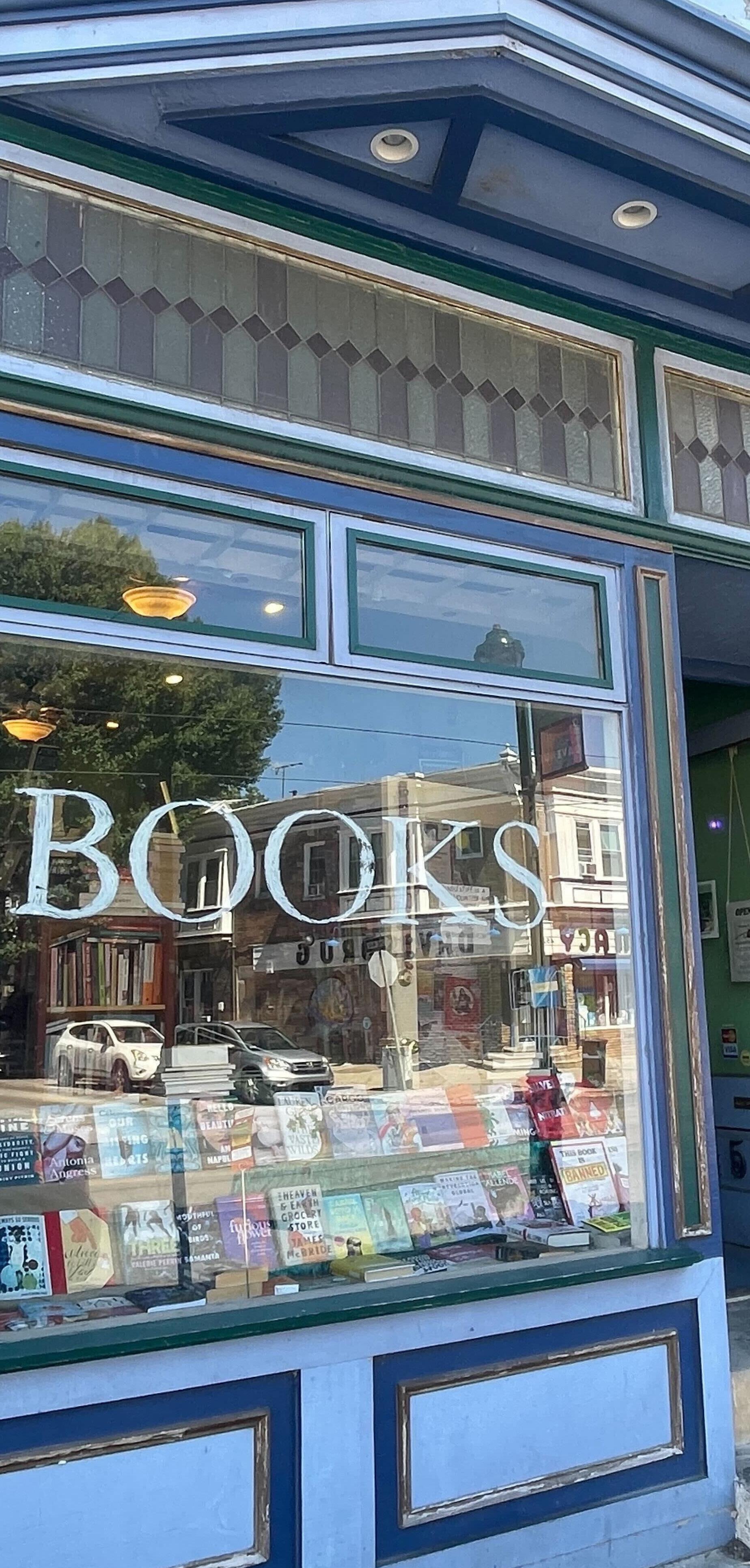
The inaugural event included all kinds of fun and exciting events—ranging from giveaways, book deals, author signings, etc.—across 20 various independent bookstores in the city. It proves once again that Philadelphia is no stranger to the independent bookstore scene—or rather, independent bookstores are no strangers to Philadelphia. They have played a pivotal role in shaping, cultivating, and reimagining the space for reading and attaining books.
Independent bookstores in Philly have always been more than just places to attain books. They’re also hubs of community power and resilience. And it is this culture of community that pushed forth the Philly Book Crawl: a celebration and love letter for all our favorite local bookstores.
In an interview with Eric Smith, the founder and lead organizer of the Philly Bookstore Crawl, he explains that the idea of a bookstore crawl was inspired by ones he attended when living in Richmond, Va.
and Ann Arbor, Mich. When he and his wife moved back to Philly, he knew it was Philly’s time for its own day–long bookstore bonanza.
Smith shares that the layout of the event was entirely up to the community members, making it flexible and personalized to Philly folks. He explains that the bookstore crawl hopefully encourages people to “check out a new place or go to a new section of the town.” He hopes that people accept this invitation to spend a day learning more about the city’s bookstores and their neighborhoods. The goal of the bookstore crawl is to supplement the community that Philly's independent bookstores have fostered. Smith expresses how it's important to remind people that these indie bookstores are there: They “offer up something that [Amazon] can’t—and that's a community.”
This concept of “community” is also reflected by Jon Bekken from Bindlestiff Books (45th and Baltimore). This long beloved West Philly favorite is now reaching its 18th year of business in December; with this note, Bekken shares how throughout all the years, Bindlestiff’s “sense of community and the community [they] serve, constitute each other.” In other words, they are not mutually exclusive, but continue to define each other in a harmonious relationship.
West Philly residents themselves influence Bindlestiff's book selection. “There's no space for ‘junk’ in the store, [so] we have to have things that seem to us to speak to the community,” Bekken says. This collaboration extends beyond book genres in stock through their support in working with various community partners. The A Book A Day program supplies books for the local elementary schools. Bekken further explains how Bindlestiff has provided books for incarcerated people and dental clinics, among others. There seems to be no limit to how Bindlestiff has actively and meaningfully responded to their community. And just as Bindlestiff has been there for the Philadelphia community, the community gives back.
This is most notably represented by the
fact that Bindlestiff is an all–volunteer store, which Bekken had found to mean that the “people who work at the store are passionate about it and bring some real commitment and expertise.” This operation format also obviously reduces the cost structures of maintaining the bookstore.
of the 70-year-old book business Joseph Fox Bookshop at the end of January 2022. These disappearances are real and their impact is even more so to the communities that they have served for decades.
Indie bookshops “serve the people who want to hold those books and look at them,” Bekken says. The concerns of the threats of disappearance for small, independent bookstores are also influenced by institutions like Penn. Bekken says that House of Our Own Books has a symbiotic relationship with Penn, where “as long as they are still there, Penn will allow them to stay.” But if the folks at House of Our Own were to retire, he doubts Penn would otherwise support an independent bookstore. Bekken openly remarks: “[Would] Penn decide that [House of Our Own] is a very valuable piece of property that could become either a frat house or combined with other properties to make another high rise?”
Therefore, this Philly Bookstore Crawl and the existence and resistance of local Philly indie bookshops are beacons of hope and change. Appreciating our Philly booksellers and bookstores is a deliberate act to support our local community.
There is no doubt that there are definite realities and struggles of maintaining and sustaining an independent bookstore, especially in the context of the hegemonizing forces of major corporations. One such force—Amazon—has played a critical role in wiping out many local indie bookstores due to its predatory pricing practices, which have influenced how book–buyers choose where to attain books.
But for some bookstores, their perseverance is one met with no progress. After 76 years in running, the iconic, locally loved, family–owned Robin’s Bookstore closed its doors in 2007. This was met with another (very) local independent bookstore shutting down: the Penn Book Center in May of 2019 after 58 years of operation. And most recently, the closing
Smith and Bekken share a common goal: spreading hope. Hope in Philadelphia, hope to continue, hope to preserve, and, most importantly, the hope to resist—collectively as a community.
Because, essentially, we all deserve a bookstore to call our community. We all deserve a chance to grow a love for reading and share that love with others. Books break barriers. Independent bookstores break barriers. They allow people to meet new people, forge new relationships, learn and unlearn, and contribute knowledge and empathy. Independent bookstores reflect the community: When the bookstore dies, a part of the community dies too.
“If we don't celebrate [the indie bookstores] as often as we can, they won't be here. Hopefully [the bookstore crawl is] my way of giving back to the bookshops that have done so much for me in my career and my author life,” Smith says. k
There seems to be no limit to how Bindlestiff has actively and meaningfully responded to their community. And just as Bindlestiff has been there for the Philadelphia community, the community gives back.
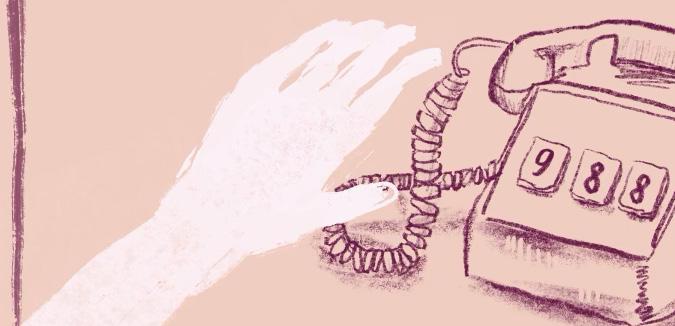 BY SOPHIA ROSSER
Graphic by Katrina Itona
BY SOPHIA ROSSER
Graphic by Katrina Itona
Fifty years ago, people had to remember the different local seven–digit phone numbers to reach their police, fire, or medical services. Accidental (and preventable) deaths and injuries had become an epidemic. Enter 911, the standardized national number for emergency services. Fast forward 50 years,
and 988 hopes to be the 911 of mental health emergencies: the number to call for the suicide hotline as well as during behavioral crises which don’t require police intervention.
In July of 2022, the federal government launched the three–digit 988 number as an easy–to–remember alternative to the 10–digit National Suicide Prevention Hotline (which is still in service). Its implementation is left up to the states.
“I think the promise of 988 is great, we just need to follow through. The story of mental health care is really good intentions and no follow up,” says Molly Candon, assistant professor of psychiatry and healthcare management at Penn. In Philadelphia, the matter of follow through has been a concern of life or death.
In October 2020, two Philadelphia police officers fatally shot Walter Wallace Jr. while he was amid a mental health crisis. Though The Consortium Inc., a mental health response center located in West Philly, was familiar with Wallace, they were never contacted. Instead, Wallace’s family called 911 three times during his
crisis episode. Wallace wasn’t the first person to be killed by police who weren’t equipped to handle someone in his mental state—a quarter of people shot and killed in Philly by police in recent years were experiencing some type of mental health crisis. Wallace’s death solidified the fact that Philly needed a more robust mental healthcare infrastructure. In June of 2021, Mayor Jim Kenney earmarked $13 million to beef up Philly’s crisis response system. Money went towards beefing up Philly's crisis response system by establishing 988 services and funding mobile crisis response teams, a program that partners mental health professionals with the police.
By investing in programs centered around mental health care, behavioral crises can be resolved without the usage of violence. According to Jill Bowen, commissioner of Philly's Department of Behavioral Health and Intellectual disAbility Services (DBHIDS), when someone dials 988, highly trained responders answer and assess for the best response. Most calls are resolved on the phone. If more help is necessary,
community mobile crisis teams are then dispatched. Community is the focus of Philly’s mental health crisis response model. Furthermore, resolving behavioral crises non–coercively is a goal of DBHIDS, with the majority of crises addressed in the community or through voluntary evaluation.
There are four providers that operate these community mobile crisis response teams in different regions in the city. “The purpose of having a community mobile crisis response team is that it is a community response. It's not a police response. It doesn't come with a siren. It comes by the clinical team that is from the community that knows the community that has familiarity with the community,” Bowen says.
Another new reform is the Crisis Intervention Response Team program. This program comprises four CIRT teams that are first responders to any behavioral health crises identified by police radio. CIRT units are made up of police officers who have been trained in de–escalation tactics and mental health professionals contracted by DBHIDS. The goal of the program is ultimately for police to have better and more nuanced responses to mental health crises.
While remembering 988 is certainly easier than remembering 1–800–273–8255, it’s understandable that in the heat of the moment, people have an instinct to call 911 rather than decide whether their crisis might be better suited for 988. DBHIDS is prepared for those situations. If a call comes into 911 that does not require police intervention and is identified as a behavioral health call, it will get shifted over to 988. Furthermore, there are Philadelphia crisis line workers embedded in the 911 call center to assist with calls where the nature of the call is less clear. According to Bowen, from January 2022 to March 2023, 1,129 calls were shifted from 911 to 988.

Since the implementation of 988 in Philadelphia, the hotline has received an overall 14.5% increase in call volume, according to Bowen. A survey of people who had the mobile crisis team come
to them found that about 75% rated the overall satisfaction at five out of five and 72% strongly agreed that it was helpful and informative. It's clear that people are utilizing 988 and are satisfied with their outcomes. But DBHIDS’s behavioral crisis response system reforms are not complete.
Looking ahead, Bowen says that DBHIDS is focusing on building up their website and exploring social media as another vehicle for getting the word out about 988. This summer, a fifth community crisis response team will open. DBHIDS is also looking to open the first adult behavioral health urgent care. They also have a newly formed crisis intervention support team, which follows up with individuals and their family for six weeks to ensure there is not a reemergence of crisis.
Clearly, awareness around 988 is necessary. As Candon points out, in the year after the release of artist Logic’s song, “1–800–273–8255,” the national suicide hotline saw a 26% increase in calls and there were as many as 245 fewer deaths. While DBHIDS hasn’t approached Logic to write a new song for 988, they have been running PSAs on various media outlets, such as news channels, radio stations during the traffic and weather, and on the backs of various newsstands throughout the city. They are also working on a specific neighborhood by neighborhood strategy to make sure that everyone receives information about 988 in the best communication style and language for them. As the DBHIDS Commissioner explains, “It's an all out effort to ensure that people know about [988] at the same level that they know about 911.”
While still in their infancy, these mental health care reforms are a step in the right direction in providing Philadelphia with a robust behavioral crisis response system and to prevent future tragedies like what happened to Walter Wallace Jr.
Bowen’s message is clear: “At the bottom of all of this is that if someone’s already experiencing behavioral health distress, you want to make sure that your system that responds doesn’t add any trauma—it must alleviate trauma.” k
The purpose of having a community mobile crisis response team is that it is a community response. It's not a police response. It doesn't come with a siren. It comes by the clinical team that is from the community that knows the community that has familiarity with the community.
Going to college in Philly, we’re so often bombarded—on social media and IRL—with seemingly endless options for how to spend our free time. So I’m delighted to announce that Street has done the hard part for you: We’ve rounded up what we think are the can’t–miss events for the month (and you can expect more of these in the months to come) in one convenient place. If I’ve done my job right, there’ll be something in here for every one of our readers, no matter what you like to do with your weekends.
Arielle Stanger, Print EditorOct. 12: YèShì Chinatown Night Market @ Chinatown
Philadelphia Chinatown Development Corporation is returning its night market after a four–year hiatus. Live music, arts and crafts, entertainment, and food from neighborhood restaurants and food trucks—what could be better? Support Chinatown businesses and check it out.
Free, 6 p.m.–10 p.m., Chinatown along 10th Street and Race Street.
Oct. 13: Salsa and Bachata Class @ FDR Park Boathouse
Look, we’re all tired of the same two frat dance moves. It’s time to spice things up! In celebration of Hispanic Heritage Month, FDR Park is hosting a free dance class to learn how to finally move those feet. Bring along a dance partner (think your crush, your best friend, the next person you cross on Locust Walk). Get ready to impress the next time you have to dance with some sexy footwork.
$10, 7:30 p.m.–11:30 p.m., 1500 Pattison Ave.
Oct. 6–9:
Ring in the beginning of fall with all the best seasonal activities—from the classic pumpkin carving to apple cider making—in Center City’s Dilworth Park. Sip on a specialty cocktail, listen to live music, and eat seasonal foods from local vendors all weekend.
Free, 12 p.m.–8 p.m., 1 South 15th St.
the historic Germantown Avenue, the festival guarantees happiness on a Sunday afternoon. Come down to the festival to grab a drink, and stroll through the street to buy wearable arts and handmade home accessories.
Free, 11 a.m.–5 p.m., 8514 Germantown Ave.
Oct. 8: Old City Fest @ Old City
Oct. 19-29: 32nd Philadelphia Film Festival @ Philadelphia Film Society
Oct. 7:
Start this spooky month in style at the cemetery: Bring a picnic blanket and enjoy the Woodlands by moonlight, watch the weeping willow sway with the fall chill, and listen to a haunting live orchestra that's sure to make its way into your nightmares. It's the graveyard–core moment that your emo middle school self always imagined. $10 entrance fee, 6 p.m.–8 p.m., 4000 Woodland Ave.
This annual fall festival features food, fashion, and culture all in the historic district of Old City, Philadelphia. With over 100 vendors participating, there’ll be no shortage of fun events and great food to try at the center of Philadelphia’s arts and culture scene.
Free, 11 a.m.–6 p.m., Old City, Philadelphia.
Every October, Philadelphia Film Society hosts the singular event of the year: Philadelphia Film Festival. With curators gathering cinematic splendor from the most prestigious film festivals around the globe, PFF offers an extravagant collection of films: from the most critically–acclaimed and highly–anticipated to the most eccentric and offbeat, you’re in for a ride through the ever–so–strange world of cinema. And don’t forget to attend masterclasses, Q&As, and all kinds of special events.
Tickets starting at $12, various locations.
Oct. 9-15:
Oct. 8:
From live music to stage performances, maker’s village to sustainability hub, Fall for the Arts Festival has it all. With more than 200 artists, artisans, and decorative arts vendors along
Seven Nights. 25 Bands. One Scene. It’s the Philly Music Festival. Featuring new artists each night from indie rockers to coffeeshop pop, this citywide festival is a clear incentive to travel through Philly and see all the venues this music city has to offer. Even if you don’t know any of the words, you’ll undoubtedly have the time of your life dancing the week away with all your friends. $29–$98, various times, various locations.
Oct. 22: “They Were
@ The Penn Museum
Remember that weird friendship with your best friend in high school where you kissed sometimes? No? Well, I know I’m not the only one because our history is littered with JFKs and Lem Billings (look it up if you don’t know about this iconic secret romance friendship). In collaboration with the LGBT Center, Penn Museum is presenting a panel of experts on the hidden history of queer
expression throughout antiquity. Free with student ID, 2 p.m.–3:30 p.m., 3260 South St.
Oct. 22-Jan. 21: Marie Laurencin: Sapphic Paris @ The Barnes
Famed French artist Marie Laurencin's vision of “Sapphic modernity” is on display at the Barnes beginning at the end of this month. Going against the grain of modern European art, her works center women and subtly hint at the queer experience. Dive into her world—1920s Paris with a twist—at this upcoming exhibit. $5 with student ID, various times, 2025 Benjamin Franklin Pkwy.
Oct. 23: Ms. Lauryn Hill & Fugees: Miseducation of Lauryn Hill 25th Anniv. Tour @ Wells Fargo Center
Ms. Lauryn Hill and Fugees are coming back to Philly this October to perform the album of all albums. Hill and her solo debut achieved so many firsts—the first hip–hop record to win Album of the Year, and the first woman to win five Gram-
mys in one night. Celebrate the monumental album’s quarter century birthday.
Tickets starting at $64.50, doors at 7:30 p.m., show at 8:30 p.m., 3601 S. Broad St.


Oct. 25: Depeche Mode @ Wells Fargo Center
Touring their new album Memento Mori, electronic music band Depeche Mode is coming to Philly this October. From their ‘80s hit “Just Can’t Get Enough” to 1990’s “Enjoy the Silence,” the group has achieved longevity and icon status in the UK. Their newest work was released to critical acclaim, making Depeche Mode well worth seeing.
Tickets starting at $69, show at 7:30 p.m., 3601 S. Broad St.
Through Oct. 29: The Artist’s Mother @ Philadelphia Museum of Art
Described as an American icon and a Victorian Mona Lisa, James McNeil Whistler’s Portrait of Artist’s Mother has been widely featured in various works
of fiction and within pop culture. Displayed for the first time in the city in 142 years, Whistler’s iconic work will join with other Philly local artists’ works inspired by the portrait in an exhibition that explores the circumstances surrounding the portrait’s creation and its legacy in Philadelphia. Free with museum admission, doors at 10 a.m., 2600 Benjamin Franklin Pkwy.
Saturdays and Sundays through Oct. 29: Southeast Asian Market @ FDR Park
Stuffed chicken wings, coconut sticky rice, and fresh–pressed sugarcane juice—there’s nowhere else in Philadelphia where you can find these delicious Southeast Asian street foods. If you’re tired of cheesesteaks, come down to FDR Park and support the open community space and cultural hub of refugees and immigrant members from Southeast Asia.
Free entry, 10 a.m.—6 p.m., 1500 Pattison Ave. & S. Broad St.
 Design by Janine Navalta
Design by Janine Navalta
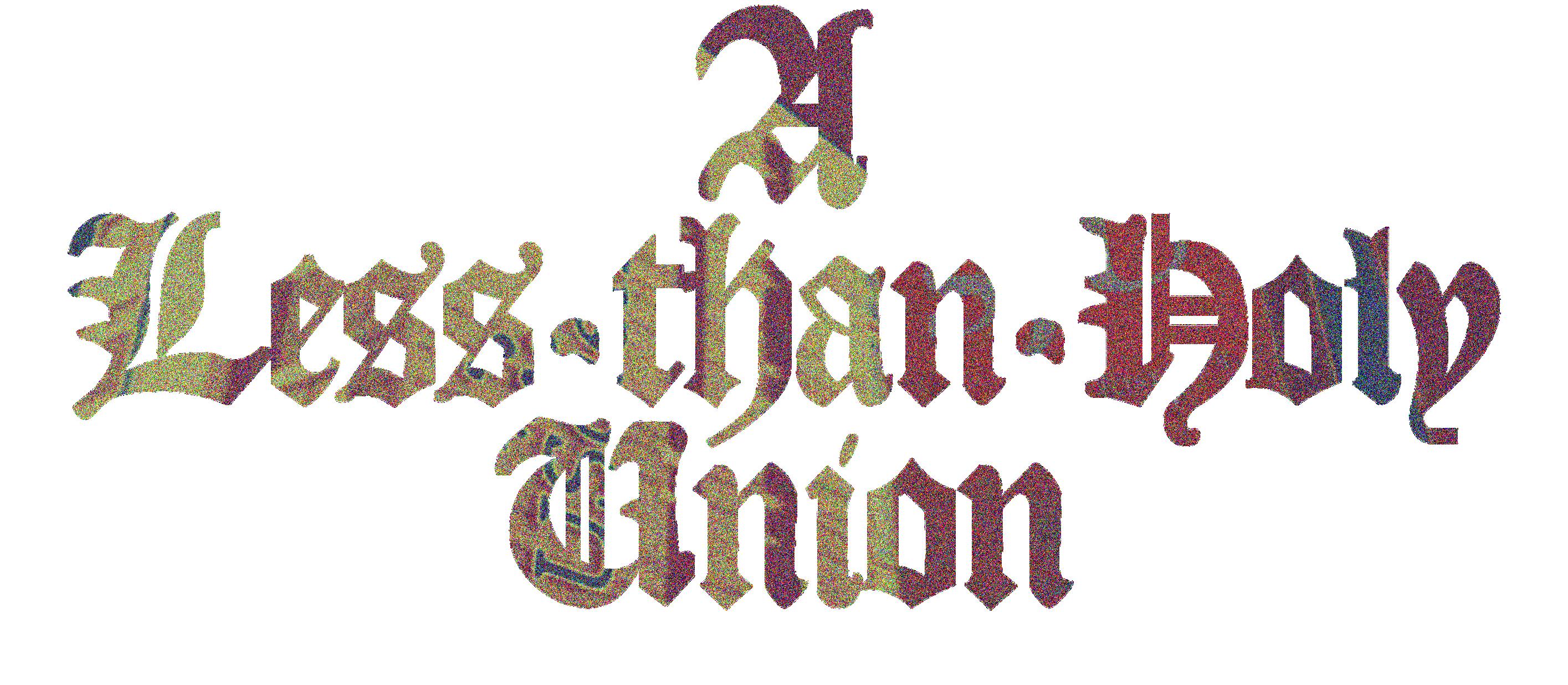
Because things have changed, and we’re tired of it. More importantly, we’re tired of being lied to.”
Those are the words of Hailey Fry, formerly a student at the University of the Sciences’ Philadelphia College of Pharmacy. PCP, as it’s known, is the country's oldest school of pharmaceutical medicine, a fact which makes the context of Fry’s speech all the more sur -
prising—it was April 2022, and her school had just announced that they would no longer be offering birth control services.
The students of PCP held a class meeting to protest this policy change. In a video uploaded to her Facebook—which has been blurred out, we can assume to protect the identities of the attendees—Fry can be heard speaking.
“I used to be really proud to say I go to USciences. I was proud of my education and my university. Unfortunately, since you announced we were being bought out, that has changed too,” she continues. There’s conviction in her voice, and venom, too, blended with resignation.
A subset of students, and not an insignificant one, have shared Fry’s journey from pride to disillusionment. They’re the former USciences undergraduates who ended up attending Saint Joseph’s University’s West Philadelphia campus. In short: the students who’ve graduated or will soon be graduating from a school that is, in some ways, totally different from the one they signed up for, caught in a clash between the religious and the secular.
Occupying a few blocks tucked in between the Woodlands Cemetery and Clark Park just southwest of Penn, the campus itself is small. The only remaining trace of USciences is an anachronistic multi–story sign gracing the front of the Living and Learning Commons, the last building completed by the school prior to the COVID–19 pandemic.
The circumstances that eventually led USciences to pursue a merger with St. Joe's, a Jesuit university whose main campus is located in northwest Philly, began years ago. As early as 2017, the school was facing a $4.5 million budget deficit. Compounded by a diminishing applicant pool and the loss of on–campus housing revenue, talks were opened between the two colleges during summer 2020.
From there, things proceeded quickly (in merger terms). An acquisition was officially proposed as early as February 2021, and was quickly met with
backlash. However, administrators from both institutions assured that this was in their mutual best interest, and that the changes in terms of day–to–day student life would be minimal.
“This is an example of opportunity, not born out of necessity,” said then–president of St. Joe's Mark Reed in a statement to The Philadelphia Inquirer. St. Joe's office of communications declined to
comment on this story.
His USciences counterpart at the time, Paul Katz, concurred: “This is not about shrinking. This is about growth and future potential.”
But those promises haven’t come to pass. Now St. Joe’s has cut its graduate research programs and sold off many of the buildings it acquired—literally shrinking its West Philly campus. While the last of the USciences–cum–SJU classes will graduate in the next couple of years, there are wider–reaching stakes at play.
A few years ago, The New York Times reported on student concerns of LGBTQ safety and freedom of expression in the face of a similar merger between Watkins College of Art and the Christian Belmont University in Nashville, Tenn. Censorship of artwork and firing of non–Christian instructors were at the forefront of the community’s mind, fearful of being incorporated into an institution that was actively hostile towards their values.
The St. Joe’s expansion shows no indication of slowing down. In January of this year, they announced plans for another merger, this time with the Pennsylvania College of Health Sciences in Lancaster, Pa. It will add nursing programs to their course roster, but the agreement poses the question of whether the future health workers under their instruction will be trained in providing care that conflicts with Christian teachings.
University of the Sciences and Saint Joseph’s University officially became one institution on June 1, 2022. In an accompanying press release, St. Joe’s' adjective of choice to describe the merger was “transformative.”
Emalie Rowles doesn’t exactly agree. “I don’t think so,” she pauses, chewing on her words. “I think if anything it’s transformative in the negative sense, in that we’ve lost so much.”
When we spoke earlier this year, Rowles was a fourth–year neuroscience major, then living through their first semester as a full–fledged student of Saint Joseph’s University. Although they’ll be the first to tell you they didn’t feel like one.
In high school, Rowles toured USciences as a prospective chemistry major and fell in love with the program, which was “insanely impressive” compared to other ones she’d seen. Her first–year fall was likewise optimistic: the University had just announced the construction of a new dorm building (the aforementioned LLC), and despite rumors of debt circulating, there was no potential merger on the horizon.
Things changed with the COVID–19 pandemic, which sent Rowles and over 14 million other college students home during the middle of the school year. Since campuses could no longer charge for housing—while still having to maintain their facilities—any pre–existing financial struggles were exacerbated. At the end of 2020, USciences had their debt rating downgraded by Fitch to BBB, changing their outlook to “Negative.” By the following summer, Rowles and most of their peers were aware of the proposed acquisition.
“That’s when the petition came out,” she says. In fact, there were multiple petitions— two on Change.org—but Rowles is probably referring to the one started by pharmacy student Jacy Lieberum, which rejected the merger on the part of the USciences student body. Lieberum highlighted aspects of the school, like its science–centric curriculum and alumni connections, that could be threatened by a name– and brand–stripping acquisition.
The petition, which is still open as of writing, currently has 1,825 signatures, about 500 more than USciences’ undergraduate population the year it was published. Signees were also able to comment on their reasons for supporting the petition:
“I applied and committed to USciences because I wanted an education focused in the sciences with a small student body and individualized programs; I fear that these draws will be diminished or eliminated as the merger comes into place.”
“St. Joe's can release as many statements as they want on their website about being welcoming and accepting of differences, but those statements ring empty in the events and experiences of those who have faced discrimination there.”
“I don’t even go to this school and it pisses me off”
Although Rowles’ own course of study remained relatively stable, they share many of the same frustrations. “I don’t think I’m a St. Joe’s student because I’ve only attended there for one semester,” they say. “To not even acknowledge on my degree an institution I attended for three years, and signed up to go to, and paid to go to? Personally, it’s a little offensive.”
Olivia Lamond, another recent graduate and friend of Rowles, opted for more visceral language when I spoke to her towards the end of her senior year. “I feel like my education is being ripped from my hands—this amazing, diverse, open, almost too good to be true scientific education,” she says, her voice clipping over the phone.
Through a scheduling meeting with a professor during the 2022–23 academic year, Lamond caught wind of how extreme these shake–ups would get. They warned her, somewhat ominously, that “‘there are a lot of things that are going on, and that are going to happen, that are going to shake the entire university.’”
Lamond has a flair for the dramatic that can sometimes tip over into hyperbole. She asserts that “our campus is not going to
I don’t even go to this school and it pisses me off.
There’s nothing radical to the university model, and this to me was an opportunity to disassemble two and reassemble them together.
exist after this semester—no students, no classes, no professors, no campus, no anything.” While that’s not confirmed per any official university statements, it captures the feeling of something you cared deeply about becoming totally unrecognizable.
Throughout the entire merger process, Rowles notes a pattern of dishonesty and obfuscation on the part of both schools’ administrations. “At first they did tell us that the name wouldn’t change, that we wouldn’t even be really affected. Turns out that’s not true,” she says.
And a new name is only the tip of the proverbial iceberg, sitting atop staff and faculty departures, in addition to the pruning of research and academic programs. “I know many people whose majors are basically erased, especially the smaller bio majors,” says Rowles.
Lamond isn’t as ginger: “The people that are in those majors and minors right now— they’re not allowed to finish it out. [St. Joe's] is just saying ‘fuck you and move on.'” Kids are stuck with extra credits and nothing to do with them.
In one case, USciences’ cannabis research program was cut for conflicting with the Catholic church’s stance on drugs, only to be re–established as a certificate under St. Joe's. Lamond’s read is that “they’re basically stealing the program and putting their name on it.” Erica Waldorf, who was the USciences MBA assistant director when the program was originally launched, is no longer with the university.
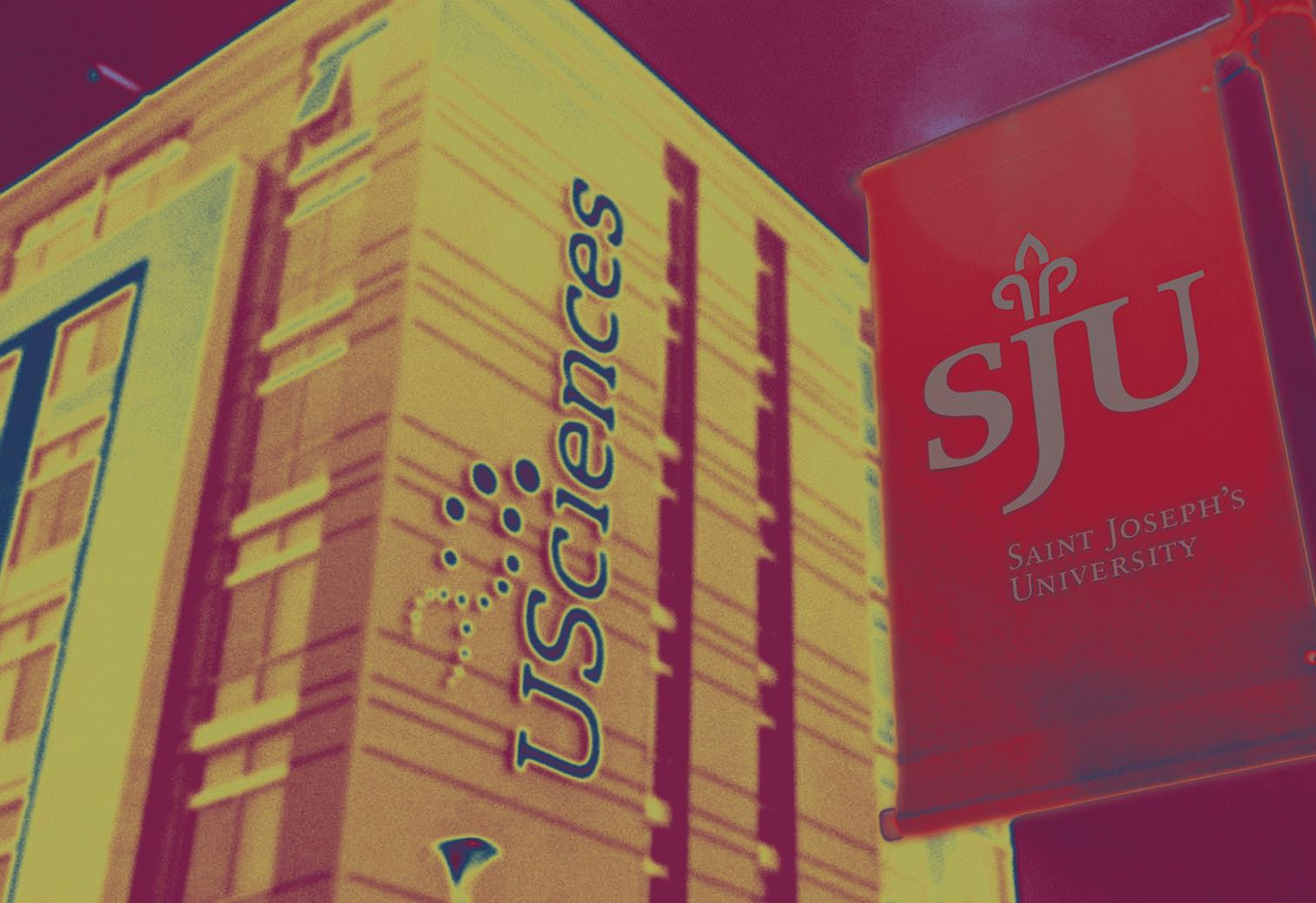
Rowles also confirmed that student health services still don’t offer contraception or birth control—another consequence of St. Joe’s’ religious doctrine. “One profes-
sor literally sat down in the classroom with us and started crying,” says Lamond of the day the news got out.
These policies, though, have been met by a groundswell of students trying to improve their conditions from the inside.
“I know some of the fraternities have been taking that upon themselves, which is lovely, considering our frats aren’t huge,” says Rowles. “I know at every party I’ve been to there’s been free condoms at the door.” Even if the motivations of horny frat boys aren’t the most pure–of–heart, she and I agree that it’s probably a net good.
Another student I spoke to, who asked to remain anonymous, worked for St. Joe's' social media department, and has made an effort to represent students from the former USciences campus, or from marginalized backgrounds, who felt unrecognized by
the school’s online brand. She’s been able to field concerns from fellow students—many of which she shares as a Muslim woman— and says it’s easier to address them from her current position.
Rowles and Lamond didn’t stick around quite long enough to experience these incremental quality–of–life improvements, which are at best quick fixes for systematic errors in judgment. As an example, perhaps the most damning part of the contraceptive saga is that it was never officially announced to the public.
According to Lamond, “the only way that people found out was that the on–campus doctor at USciences reached out to students who were prescribed birth control individually.” This was confirmed by a former USciences faculty member who has since left the institution, and who asked to remain anonymous.
“People were really upset about that, because it made it seem like it wasn’t important,” she says. “It was being hidden from students who weren’t necessarily on birth control at that moment but would potentially be in the next school year, or who were considering doing it right then and just hadn’t done it yet.”
This professor—who now works at a nearby university—was up for a tenure position when the merger was first announced. Unlike the initial student response, the temperature among the USciences faculty was generally positive at first, although she now credits this to an assumption that “there would be a true merging, looking at the strengths of both programs and bringing them together.”
Offering some comfort was the assurance that any tenured professor would be “automatically grandfathered in” when the deal was finalized. In September 2021, six researchers submitted their tenure portfolios, essentially a life’s work in research. Obtaining tenure is a crucial step in the careers of many academics, one of only a few paths to job security and consistent financial support for their research.
By winter of that year, rumors started
circulating that the original tenure deal wouldn’t be honored. The provost later confirmed this, and half of the candidates weren’t given return offers by St. Joe's at all.
The professor I interviewed was one of the lucky ones, but found her contract’s “opportunity” to reapply for tenure disrespectful. Not to mention, by this point she’d seen the writing on the wall: “I think it was related to
ment was signed in the summer of 2021, the chairs of both universities were paired with their counterparts to discuss curricula and write vision documents and such. At least, that’s what was supposed to happen; in practice, the attitude from the St. Joe’s side was much more akin to “‘tell me how many tenure track faculty I’m getting from your department.’”
The chair tells me this is when it became clear to her, that “they had no interest in hearing about my department and what we did and continuing it.” The vision document she wrote was thrown out, which was disappointing, especially when she saw so much potential in the merger as a research endeavor.
“There’s nothing radical to the university model,” she says. “And this to me was an opportunity to disassemble two and reassemble them together.”
St. Joe’s wanting to have more power to still get rid of who they wanted to get rid of.” She chose not to return in the fall, and was far from the only one.
“Everyone who did research is leaving,” she says, “but that’s not what St. Joe’s cares about.”
Whether they chose to jump ship or stay put, there was an abiding sense from the USciences faculty of being unheard and unacknowledged. I met with a St. Joe's chair who occupied a similar position at USciences before its acquisition, and who also served on a “chairs’ group” during the last year of the merger.
At first, this monthly gathering of USciences department heads was called in order to hear the concerns of the faculty and advocate for them with the provosts and deans of both schools. However, they rapidly developed a kind of “learned helplessness” as issues continued to mount, a sense that “I don’t think that anyone cares about what I have to say, that the experience I have is valued in this system.”
This all came to a head with “Merger–athon.” After the definitive merger agree-
But research isn’t a part of the St. Joe’s credo. The Jesuit education model emphasizes lecture and didactic learning, while one of the fundamental ways USciences trained its students to be health care professionals was through research.
Now the plug has been pulled on the graduate biology research programs, research professors are leaving in droves, and students are feeling that absence.
“It’s not clear that anybody really understands their needs, or how they’re different,” the chair says of the former USciences student body. The university’s research programs were one of the biggest draws when both Emalie Rowles and Olivia Lamond were applying to college.
That helps to explain why one of the most prevalent responses to the merger between University of the Sciences and Saint Joseph’s University was, of all things, puzzlement. Lamond puts it like this: “Why would a rich Catholic university want to buy one of the most historical sciences universities in the United States?”
She may still not have the “why,” but now she’s painfully clear on the “what.” “All they’re doing is buying science and throwing it under the rug,” she says. It would scan as embellishment, if it wasn’t the truth. k
I feel like my education is being ripped from my hands—this amazing, diverse, open, almost too good to be true scientific education.
If you reach into the depths of your brain, back to the fuzzy memories of your ten–year–old self, do you remember your favorite elementary school teacher?

Every Penn student can name at least one teacher who has helped inspire their academic drive and love for learning, playing an integral role in getting us where we are today. For Faith Applegate (C ‘25), an aspiring social studies and English teacher, this formative figure was Ms. Waters. The actual details of her elementary school education aren’t the clearest—Ms. Waters taught her “some kind of math and some kind of English”—but it’s the way her teachers made her feel that has stayed with her all these years, even if knowing how to do long division hasn't.
“Teaching is kind of amazing,” Faith realizes. “It's the profession that connects you with a classroom full of 30 young people a day. You get to speak to all of them at once about different subjects and things you can impart onto them, and you get to learn a lot from them as well.”
Penn’s new club for teacher hopefuls is a lesson in community–building, as they work to create a sustainable future for education.
For kids who are forming their own opinions about the world around them, teaching can have an incredible impact. It’s also a profession that has faced a slew of challenges in the past few decades, leading many to question how sustainable the field of education will be for teachers in the coming years. Faith noticed the stark absence of a community at Penn for undergraduate students interested in becoming educators, and broached this issue to fellow teachers–in–training Ivy Wen (C ‘24), and Danielle Kohn (C ‘26). Their summer internships in the Penn Program for Public Service through the Netter Center for Community Partnerships gave them the opportunity to imagine what this space on campus could look like. Since then, Faith, Ivy, and Danielle formed Aspiring Educators at Penn, a club for students who are committed to and curious about entering the field of education.
ASPIRING EDUCATORS like Faith, Danielle, and Ivy are few and far between at Penn. Faith describes feeling like a unicorn in a sea of 10,000 undergraduates vying for careers in medicine, finance, and engineering. Pervasive pre–professional
culture dissuades students from pursuing, or even considering, positions outside the big three.
Faith was working as a move–in coordinator last summer when an older man struck up a conversation with her. The two chatted for a bit—he asked Faith what she’s studying and her plans for the future. She told him she wants to become a teacher, to which the man responded incredulously, “Oh, and you go to Penn?”
Many elite universities, including Penn, participate in career funneling—steering students towards jobs associated with higher pay and prestige—through implicit messaging and the exclusion of spaces dedicated to up–and–coming educators and other lower–status occupations at career fairs. While Career Services boasts a plethora of resources for students interested in consulting and other highly sought–after fields, advising opportunities for teacher hopefuls are strikingly sparse.
For Sophie Gala (C ‘26), a member of AEP’s leadership board, “It's hard to separate a specific education–related stigma from just classism at Penn.” She suggests the student body largely views teaching as infe-

rior precisely because it makes less money, lacking the value that’s placed on more lucrative, “big name” careers.
“I think a lot of Penn students use education as a way to further an application for something else,” Sophie says, while Danielle adds that even amongst those who are genuinely interested in the occupation, the majority lean towards education policy rather than a position as a “teacher practitioner.”
It can be frustrating for aspiring educators to be constantly met with patronizing phrases like
“Oh, that's so good for you...I could never.” or “I want to make a broader impact than that” (Faith has heard both). AEP wants to push back against these narratives. Faith believes teaching, working with young people on the ground, is an avenue for powerful
“Oh, that's so good for you ...
I could never.”
For undergraduate students interested in education right now, it's very ‘choose your own adventure.' You have to go out of your way to pursue this.
change–making and developing expertise essential to larger, policy–level campaigns.
“Teaching is a radical act, you get to be that student's primary point of contact for five days out of the week,” she says. “I think the most important part to me is the idea of mentoring students and being a constant presence in their life.”
Generally, Danielle feels teaching doesn’t get the respect it deserves. Educators spend years honing the skills required to lead a classroom, individualizing approaches
whenever possible in an effort to help each student grow on their own terms. “I definitely see teaching as an art and a practice that needs to be cultivated over a long period of time,” she says.

Even Faith admits she made the mistake of assuming that years of babysitting as a teenager taught her everything she needed to know about childhood development. From making phone calls home to classroom management, teaching requires a great deal of competence and commitment that often
The stigma at Penn surrounding the field of education can be understood in the broader context of what Danielle refers to as “teacher deprofessionalization.” The term encompasses prevalent social attitudes towards teaching that don’t consider it a legitimate, viable, or worthy profession.
Teaching, a job predominantly held by women since the 1890s and closely associated with motherhood, has long been perceived as an innate vocation, rather than a serious career that is built through years of training and expertise. Public perception and institutional changes to the education field have thus relegated teaching to a “semi–professional status,” leading to teacher shortages and undermining teachers' agency in the classroom.
Teacher deprofessionalization is ultimately, “rooted in education policies that favor results over actually cultivating students as people,” Danielle explains, “and policies that actively frame teachers as the aggressors and villains in the story of education reform.”
AkCOMBINATION of stigma within the Penn community and the broader phenomenon of teacher deprofessionalization has contributed to a lack of adequate undergraduate resources for aspiring educators. Due to the dissolution of tracks for students to become certified while completing their degree, the future teachers of Penn have had to get a little more creative.
Although the College of Arts and Sciences no longer offers an education major, Faith, Danielle, and Sophie are working towards graduating with the urban education minor. They all speak highly of the professors and course content, but Danielle admits feeling disappointed that “the classes are very much preparing students to take on positions as policymakers rather than practitioners. Very rarely in an urban education class will you see anything that's focused on pedagogy and best practice.”
The urban education minor was originally divided into three concentrations—primary education, secondary education, and policy, research, and practice. However, insufficient interest ultimately led to the discontinuation
of the primary and secondary pathways. Now, dedicated students like Danielle are left to either apply for submatriculation into the Graduate School of Education, one of the country’s leading institutions in the field, or settle for limited access to undergraduate instruction.
Jennifer Valerio, Associate Director of the Urban Teaching Residency Program and former math teacher of 16 years, is keenly aware of the disconnect between graduate and undergraduate resources. She’s spearheading an initiative to get UTR alumni more involved with the newly redone GSE, including serving on panels open to undergraduates, so “current students will have greater access to alumni for support purposes and also for really building a network where you feel like you're part of a professional community.”
Additionally, many educators–in–training take advantage of the multitude of internships and other opportunities available through the Netter Center, like the Penn Program for Public Service, which requires students to intern in a University assisted community school program and develop a research project addressing a pressing issue affecting the West Philadelphia community. Faith, Danielle, and Ivy’s joint final paper details the inception of Aspiring Educators at Penn.
Regardless, Faith says the club is putting the greatest emphasis on building community because “resources are great and very needed, but I think the overall lack of community is what really dissuades people from going into teaching.”
Danielle noticed that many Penn students show a strong interest in mentorship opportunities and working with children, but have never thought about becoming teachers. She says that the goal of forming AEP was to start the conversation and to get people thinking about what a professional life in teaching could look like for them.
Part of the club’s mission is also to better utilize resources within GSE. It wants to bridge the gap between the graduate and undergraduate schools by supporting more students to matriculate into the master’s program. In addition, AEP is collaborating with GSE and Valerio on a variety of teach-
ing–related initiatives, such as the Aspire to Educate Grant, which encourages future educators of color to go into STEM teaching.
The pathways to teaching, even for students committed to entering the world of education, are often opaque and difficult to navigate. “For undergraduate students interested in education right now, it's very ‘choose your own adventure,’” Faith jokes, “you have to go out of your way to pursue this.” Or as Danielle describes it, figuring out how to become a teacher at Penn can seriously feel like “[it’s] every man for himself.”
How does one submatriculate into Penn’s GSE program? What advisory resources exist for people interested in the teaching route? The answers are sometimes buried under frustrating levels of bureaucracy, a drainage of University funding from teaching–related opportunities, and a lack of a centralized student body for aspiring teachers. Danielle hopes AEP will be a space where undergraduates can work together to figure out these questions about the education pathway—and make lasting institutional connections so more information on the process exists for the next generations of students.
“Often when one or two people make a claim [that] we want more support for our career path, the University's response would generally be, ‘Well, there's not enough interest,’” Faith explains, “So we're trying to prove that there is student interest.”
But AEP wants to broaden the scope of their club from the career to the culture. “The other goal is also to get people to talk about … educational inequality and teacher deprofessionalization,” Danielle says, because “at the end of the day, yes, we want to encourage more people to become teachers, but we also want to encourage people to become more aware of the [educational] issues that exist right here in Philly.”
is all the more important in the face of a critical national teacher shortage. According to limited data released by the National Center for Education Statistics, 45% of public schools in the United States had at least one teacher vacancy as of October 2022. Across the country, unfilled positions number in
the tens of thousands.
Overworked and underpaid educators are experiencing unprecedented levels of burnout, attempting to make up for learning lost during the COVID–19 pandemic and increasingly subject to political attacks steeped in fear and misinformation. When school districts get desperate, vacancies are filled by teachers who aren’t fully credentialed, but without adequate resources to help novice educators develop the necessary skills, frustration builds and the cycle continues.
Still, the teacher shortage isn’t uniform across the board. Since wealthy suburban schools can afford to offer higher salaries, economically disadvantaged school districts with higher proportions of minority students, especially in rural areas, bear the brunt of the crisis. Furthermore, math and special education teachers are in particularly high demand.
The School District of Philadelphia has been hit hard by the teacher shortage—a 1.5% increase in teacher attrition occurred in Pennsylvania last year, the largest on record, for a total of 7.7%, and Associate Superintendent Tomás Hanna reported a decrease in student teachers from 1,200 to 362 at a news
At the end yes, we want more people teachers, but to encourag become more educational exist right
conference in May of this year.
Both Faith and Sophie attended public school in Philly for many years, which they believe significantly influenced their career aspirations. “It definitely sparked my passion for educational justice … having seen the inequities within my own neighborhood,” Faith says.
Understanding the systemic underpinnings of teacher shortages in Philly is essential to Sophie. She explains that even though you’re eating the same school lunch as more than 100,000 other students, educational opportunities vary widely across the district. As Faith says, “If these extreme teacher shortages are a problem even at the best high school in Philadelphia and Pennsylvania, it scares me to imagine all the other schools that are way more under–resourced.”
GIVEN THE MANY CHALLENGES that teachers in the Philadelphia School District face, Faith strives to be conscious about incorporating a focus on wellness into AEP. While she’s passionate about going into the field, she’s honest about her worries about the long–term viability of teaching and the toll that being an educa-
tor can have on one’s wellbeing—financially, emotionally, and even physically.
Faith wants people in the group to be able to navigate the real challenges that come with teaching and working with kids. “A huge personal question of mine is how to make the teaching career sustainable, because many, many people agree it's not—low pay, extreme burnout … you wear so many different hats throughout the day; you're tasked with so much,” Faith says. “I would love to stay in the career forever, but it just seems like it's so unsustainable at the moment.”
Contrary to popular belief, Faith recognizes that teaching is a career with a huge direct impact, precisely one of the reasons she’s so drawn to it. At the same time, she wants to help make change in the education field to address the systemic issues that are making teaching a profession that people don’t think they can afford to consider.
Faith also spends a lot of time thinking about social justice–rooted practices she can implement in her own classroom. She’s particularly interested in restorative justice, an approach to addressing harm that focuses on generating accountability from the person who committed the harm and encouraging

the people involved in the conflict to come to a meaningful solution together.
“I do remember it always being fairly punitive when students had behavioral issues,” Faith says. “I’m interested more in exploring the concept of how to teach kids and students, not just, ‘you did something wrong, you're gonna get punished,’ but ‘you did something wrong, and we're going to work on the ‘why.’’”
These changes to traditional forms of discipline in the classroom are part of a growing movement among teachers in the Philadelphia School District. Implementing restorative justice and trauma–informed practices in schools is one of the demands for “radical education transformation” that local organizations like Racial Justice Organizing advocate for. From AEP to teacher coalitions in Philly, educators are reimagining a more accessible, equitable, and sustainable system.
Sophie says that her memories of impactful teachers stay with her today, inspiring her to create a positive difference through initiatives like AEP and over the course of her future career. “[I realized] how powerful a successful learning environment can be,” she says, “the more that I dive into it, the more interested I am.” k
of the day, to encourage people to become we also want ge people to e aware of the educational issues that ere in Philly.
For many Penn students—especially those new to campus and University City at large—breaking out of the so–called Penn bubble and exploring the city beyond campus can seem daunting. Philadelphia has become largely safer in recent years, but lingering myths about the city still persist. Beyond that, the plethora of options may be overwhelming, especially without solid recommendations on which places to avoid and which to plan an afternoon around.
Fortunately, students don’t have to travel far in order to get off campus and see a new array of culinary options. Instead, one of the things that makes Penn unique and wonderful is that University City isn’t just home to Penn; Drexel also calls this neighborhood just west of the Schuylkill home. And in the land of the Dragons just across Chestnut Street, there are plenty of options for hungry Quakers to indulge in.
While there are plenty of sit–down and chain restaurants around Drexel—with Sabrina’s Café being an excellent place for brunch if you can get a table, and the Chipotle at 34th and Lancaster somehow always seeming to give larger portions than the one at 40th and Walnut—this area is also home to tons of food trucks and quick, independent eateries that warrant exploration.
Many of these trucks are concentrated along 33rd Street, just south of Market Street. Despite it being only a few blocks away from Penn buildings, it seems distant from the shadedness of Locust Walk or the bustle of College Green, with the more modern architecture of Drexel’s campus soaring into the air. But in this corridor of concrete is an oasis of culinary expression.

Just like many of the places on Penn’s campus, a common breed of cuisine here is what students colloquially call “halal.” While most trucks known as serving halal cuisine likely
options closer to Penn’s campus, making them optimal as a late meal after a study session in DRL or catching a game at Franklin Field or The Palestra.
But what truly makes this cordon different from several other areas on or around Penn’s campus is the diversity of food. Alongside those carts serving halal food are a variety of other trucks and carts featuring diverse cuisines from disparate regions around the world, and it is this facet which breaks up the delicious–yet–monotonous experience of repeatedly eating halal food.
BY CALEB CRAIN Graphic by Collin Wangdo obey that set of Muslim dietary restrictions, including not using pork, halal food typically includes dishes like spiced chicken, falafel, or lamb served over rice or in a gyro, often alongside a salad and topped with various sauces. And similarly to the halal trucks on campus, some of the ones here on 33rd Street have simple—yet vague—names like “Philly Halal Gyro” or “Famous New York Gyro.” The two that are particularly worth frequenting are both on the east side of 33rd, close to Market. There, you can find excellent chicken over rice, gyros, and always a friendly face. Another bonus is that they give some of the largest portions that can be found among halal carts in University City, providing solid bang for buck on a student’s budget. Plus, these carts are typically open later in the night than some of the
There are two particular trucks that warrant special mention in this regard. The first is Dos Hermanos, which serves a variety of Mexican dishes such as burritos and tacos. Coming from Los Angeles—a city with excellent Mexican food—theirs is one of the few places in Philadelphia up to par. Particularly good is their mole sauce, which, when combined with carne asada in a burrito, produces a flavor combination that is extremely worthy of a chef’s kiss. They can be found in a blue truck on the side of the block closest to Chestnut Street. The other is a Korean food truck known as Kami, which is normally parked on the east side of the street near Market. They also have many items on their menu that other food trucks in Philadelphia don’t often offer, ranging from delicious takes on staples such as kimchi fried rice or their fried dumplings, to a variety of incredible Asian–spiced chicken dishes.
For many Penn students, this block is far from their normal stomping grounds and requires a deviation from their daily routine. But once one heads east, past Hill and Lauder, and takes those first bites from a food place on the Drexel side of Chestnut, their taste buds will be well rewarded. k
Why Penn students should explore the world of Drexel food trucks—and a few suggestions
"Yesss,
"I
"I





"You're

The Land is Inhospitable and So Are We is primitive, perverse, intense, honest, and the singer’s most cohesive record to date.
BY HANNAH SUNG Graphic by Collin WangMitski is nothing if not a viscerally enigmatic American poet. On stage, her venereal movements evoke a character that is unlike Mitski herself: soft–spoken and impenetrable. Slated to retire after Be the Cowboy , she surprised fans with her 2022 album Laurel Hell , as well as several songs for soundtracks. But her new record could be the first time she’s been making music for her own sake in a while: “I renegotiated my contract with my label, and decided to keep making records. Thank you so much for your patience and support while I found my way here. I love you!” she wrote to fans in a newsletter.
The Land Is Inhospitable and So Are We , the singer’s seventh record, is an anthology of both old and new work, recorded in a bomb shelter in East Nashville, Tenn., and
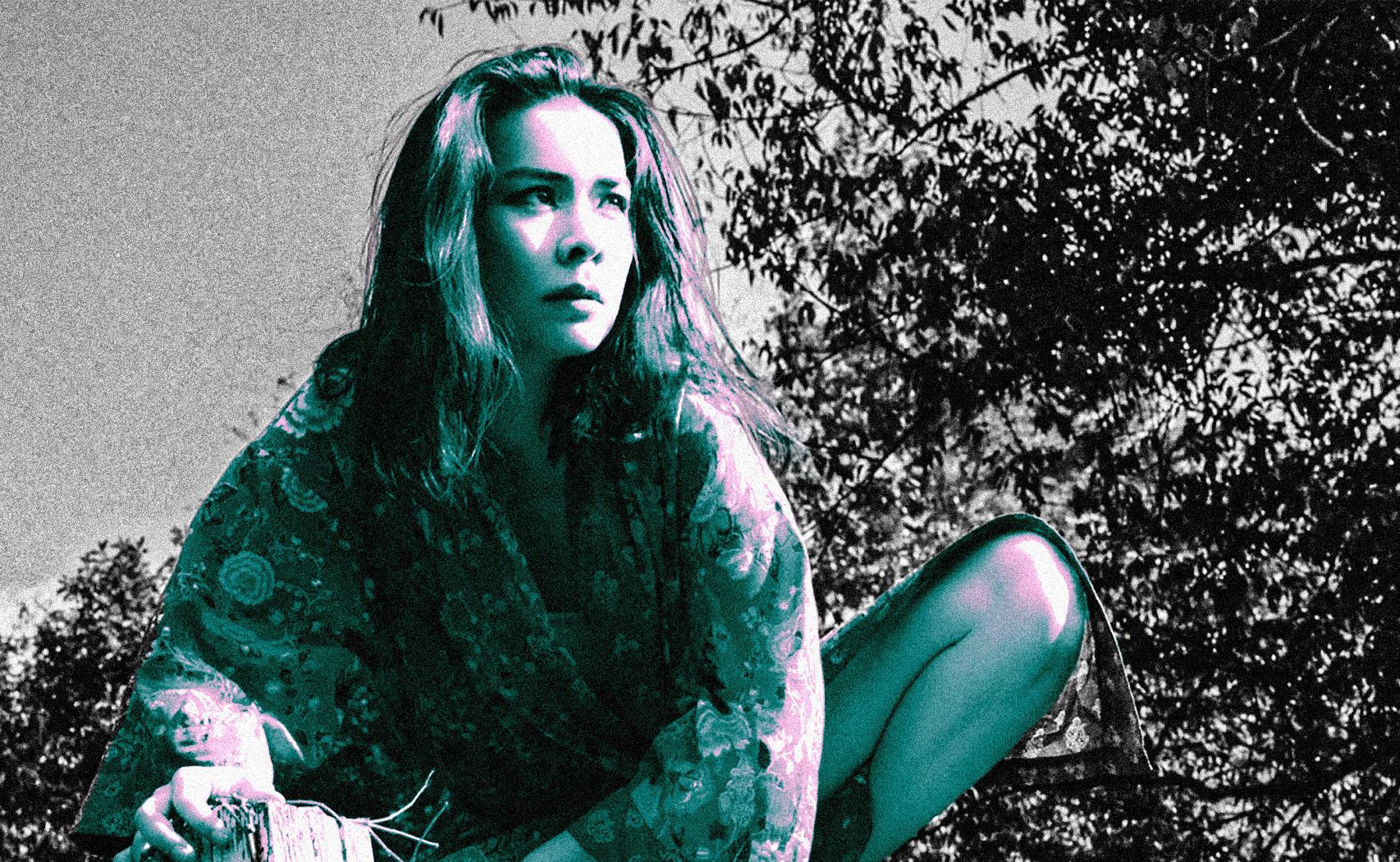
the Sunset Sound Studios in Los Angeles. Here, Mitski goes for orchestral drama, far removed from the synthesizers of her recent albums. Lush instrumentation conducted by Drew Erickson—who’s channeled old Hollywood scores for Lana Del Rey and Father John Misty—coupled with 17–person choral arrangements recalls an idealized vision of Americana.
Opening the album, lead single “Bug like an Angel” sets the tone, giving Mitski fans a taste of what’s to come: lyrics stocked with sylvan imagery, cosmic injustice, and sardonic wisecracks. A bug stuck to the bottom of the glass, lifted up, looks like an angel, and is at the mercy of a protagonist who may or may not be Mitski herself. Juxtaposed with the upbeat guitar strumming, she sings, “Sometimes a drink feels like family,” and a hidden choir abruptly echoes “family” back to her. Mitski’s chord progressions repeat, as does addiction. “Addiction is a cycle and I wanted to show that musically,” she said. She sings of fatal mistakes, and the cosmic bearing of them, such as “When I’m bent over / Wishin' it was over.”
Born and bred of nature, The Land is stocked to the brim of allegories and fables, rather free of any 21st–century allusions, as if written in biblical times, or in an apocalyptic after—after the storm, after climate change ravages the world. If it sounds church–y, that’s because that was Mitski’s intention: The end, when the protagonist deals with the throes of rock bottom, is religious retribution.
In “Buffalo Replaced,” it’s clear that she deals with burdensome thoughts, as heavy as if the bison themselves are ruminating in her brain. Mitski fears herself: “I have a hope and though she’s blind with no name / She shits where she’s supposed to, feeds herself while I’m away.” It’s an acknowledgment of the double–edged sword her hope, and ultimately, disappointment, have cost her. For all the interpretations that may arise from this record, one thing is for sure, and it’s that Mitski had a Thoreau–style reckoning in nature, deriving some of her most poetic lyrics, ever. “Heaven” employs such im -
agery: “Now I bend like a willow thinking of you / like a murmuring brook curving about you.”
Sonically departed from the rest of her discography, violins, violas, organ, piano, and woodwinds shape the album’s atmosphere. The instrumentation evokes Western front imagery, full of yearning for the expanse of the land. Mitski has grappled with the West and reversed Orientalism throughout her discography—offering her view, as a Japanese and American woman, of an oppressively white landscape. From “Your Best American Girl” to the entirety of Be the Cowboy , Mitski returns to this imagery of an archetypal Western front.
throughout the years, Mitski brings back her old stances on this record and revitalizes them all while the haunting modulations in her voice contradict the folk lullaby playing in the background.
The Land also stands out for its cohesiveness, and the interweaving of the songs throughout. In the battle song “When Memories Snow,” Mitski sings, “When memories snow / and cover up the driveway / I shovel all those memories.” It acts as a call to another song, “The Frost,” in which the snow has left, and all that is left is frost. A vast landscape that was covered in life and love is barren, yet she has remained. Many of the songs are bittersweet lullabies, but “The Frost” takes the Christmas cake for most forlorn.
The pedal steel guitar glimmers throughout the album, classically associated with American country music and its accompanying injury: the heroic gun–slinging, horse–riding cowboys in the freedom land. The pedal steel originated from Hawaii, and like the state itself, was forcibly taken by America. Mitski in turn asks her audience, what does it mean to be American?
The record is also deviously funny. In “I Don’t Like My Mind,” Mitski is explicitly relatable: she drowns out intrusive thoughts with music, she continues to be working (for the knife), and she binge eats cake during Christmas. Then, in a surprising switch–up, she begs, “so please don’t take / take my job from me.” A staunch critic of the music industry
The final stretch of the album can be categorized as the end—the end of a relationship which is akin to the implosion of a planet. “Star” deals with the lingering feelings that continue to burn, terrorizing yet comforting. “I’m Your Man” tackles a tumultuous relationship with self–deprecation. “So when you leave me, I should die / I deserve it, don’t I?” Mitski is prophesying the inevitable breakup, in which her partner finds out her true nature—the fear of being an intrinsically bad person is proven right. “You believed me like a God / I betray you like a man.” In the background, a choir retrieves the onlooker at the gates of hell, with Cerberus–like dogs barking, and of course screaming, the classic Mitski staple, in the background.
This is Mitski in the zone, where microcosmic alienation in relationships reflects her larger societal position, where her body mirrors the world, and the love is the land. Hippocrates said that Asian people reflected stagnance in their countries: “a monotonous sameness.” But “stagnant” is one word that does not come to mind when listening to Mitski. It’s not her job to subvert this narrative, but her work simply does by way of its existence. Mitski reclaims the uninhabitable in “I Love Me After You.” She is in control of herself finally, emphatically exclaiming at the end, “I’m king of all the land.” k
This is Mitski in the zone, where micro- cosmic alienation in relationships reflects her larger societal position, where her body mirrors the world, and the love is the land.
“
Peel slowly and see,” reads the tiny text pointing to the tip of a bold yellow and black banana peel. Underneath the sticker, at least on the original copies, is pink, fleshy fruit. This phallic imagery and tongue–in–cheek humor—a signature of Andy Warhol's aesthetic brand— make up an iconic cover artwork that has earned the nickname "the Banana Album." but for those who have spent time justifying their pretentious music taste and idolizing the ’60s art scene of New York City, it's better known as The Velvet Underground & Nico It’s the kind of album cover that has become ubiquitous with the music world, and one that you recognize without ever having listened to the band.
Released in 1967, The Velvet Underground & Nico served as the self–titled debut album of American rock band the Velvet Underground and German singer Nico. Despite being produced and supported by the successful Warhol, the album was a commercial flop and would remain outside of the mainstream for years. As one promotional poster put it, the album was “So far underground, you get the bends!”
This is perhaps due to the music’s experimental sound and taboo topics: droning strings and avant–garde instrumentals, Nico’s androgynous and accented voice, sexual sadomasochism, and a seven–minute ode to shooting up aptly titled, “Heroin.” While everybody else during the Summer of Love sported long hair, flowery clothing, and spent their time taking hallucinogenic
drugs and fighting against war and for free love, the Velvet Underground wore all–black leather, grappled with intravenous addiction, and explored the intense connection between love and pain. Although that resistance to pop culture kept them from being a commercial success, it's perhaps the exact reason why The Velvet Underground & Nico resonates with so many to this day.
Unlike other contemporary titans of the music industry, the Velvet Underground stubbornly avoided following the popular music style—but that decision has kept them from sounding dated in the present. The album opens with “Sunday Morning,” and follows the dream–like journey of the morning after a Saturday night out. Paranoia and perhaps regret seem to seep into Lou Reed as he sings, “Watch out, the world's behind you / There’s always someone around you who will call / It’s nothing at all.”
The album quickly transitions to the more upbeat “I’m Waiting for the Man," also sung by Reed, in which he not–so–subtly describes going up to Harlem to meet his drug dealer. The backing music of this song hardly changes from the strumming of guitar and clanging piano keys as Reed tells his story. Nico’s first appearance on the album is “Femme Fatale.” With mellow, toned down instrumentals, the star of this song is Nico’s vocals as she sings, “‘Cause everybody knows / The things she does to please / She’s just a little tease / See the way she walks / Hear the way she talks.” Cale and Reed sing back up vocals for her, cre-
ating a more masculine presence behind her words.
Based on Leopold von Sacher–Masoch’s 1870 novella of the same name, “Venus in Furs” is where the Velvet Underground’s inclination towards topics unacceptable in general society come to light. With lyrics like, “Taste the whip in love given lightly / Taste the whip, now bleed for me,” the song beautifully tells of a man’s desire to be completely enslaved and punished by his lover. If the first four songs of this album weren’t enough of a thrill to compel their underground audience, the tracklist only delves into deeper, more troubling waters with songs like “Run, Run, Run," “The Black Angel’s Death Song,” and, of course, “Heroin.” The experience of listening to these songs, whether for the first or hundredth time, always takes one on a journey through the seedy underbelly of the world.
Earlier this year, the Andy Warhol Museum in Pittsburgh hosted an exhibit dedicated to the band’s 1966 sessions at Scepter Studio. The bulk of these recently discovered recordings would make up The Velvet Underground & Nico album a year later. The museum also hosted author Richie Unterberger, whose lecture helped to break down the album’s unique makeup and legacy.
In a small, dark room, the exhibit plays snippets of music while displaying footage and photographs of the band. They define cool; dressed sleek and always wearing a pair of sunglasses. Nico, with her platinum blonde hair and sharp features, is the epit-
As quintessential as the forever–yellow banana on its cover, this timeless, experimental album never gets old.
ome of the ’60s “It girl.” Lou Reed; guitarist, singer, and in his eyes, leader of the band, still has all of his hair. John Cale; violist, bassist, pianist, and in his eyes, the leader of the band, along with Sterling Morrison as guitarist and bassist and Moe Tucker on drums, make up the rest of the crew.
Perhaps the most interesting piece of this exhibit is its collection of records: Displayed on an entire wall are original copies of the album that feature the peelable banana sticker. Some of the stickers have been peeled off entirely, others only partially; but each rip reveals the vibrant pink fruit. Other owners were kind enough to leave the album undistrubed, while one person took the liberty of adding their own stickers. It’s a simple yet effective look at how each owner made the album their own. Taking in the wall lined with about a hundred copies of the same album cover, one can begin to understand how it resonated with each individual in their own unique way.
Though its sheer experimental nature left it largely unknown following its release, The Velvet Underground & Nico has since developed cult classic status. As British musician Brian Eno once said about the album supposedly only selling 30,000 copies, “Everyone who bought one of those 30,000 copies started a band.” The Velvet Underground—and Lou Reed especially—served as an inspiration for the likes of Bono, Joy Division, and The Strokes. The group's influence stretches far and wide, and it'sthr earned a dedicated fan base of fellow artists and music lovers.

That fanbase extends to Locust Walk. As a guest of music critic and Penn professor Anthony DeCurtis, Lou Reed himself visited the Kelly Writers House in 2012. In the biography Lou Reed: A Life , DeCurtis writes of the experience: “When we emerged I could feel the audience’s tense energy. Lou, of course, seemed impervious. That kind of tension was the emotional sea he swam in, the air he breathed. The room
was small, and it was packed. A number of people had traveled great distances to be there. Everyone had known that Lou was in the house, but his not emerging for the reception lent the gathering an edge. This was Lou Reed, after all. Maybe he would walk out. When we sat down in the two chairs set up in the front of the room, we adjusted our mics, and I thanked Reed for coming. 'Anything for you,' he said."
The magic of The Velvet Underground & Nico lies in its ability to appeal only to a very specific audience. Even today, as pervasive as the album has become, it still lies somewhat outside of popular culture. The experience of playing through the tracklist is intimate, not only due to its emotional subject matter, but because the listener feels as though they are discovering something new. It’s underground. It’s cool. It’s a thrill and more than a little intimidating. The Velvet Underground & Nico is the anthem for the rebels of every new generation. k
How exactly did a show that premiered in 2011 find itself on the charts in 2023?
BY DIANNA TRUJILLO MAGDALENO Graphic by Collin WangWorkplace dramas are no newcomers to our television screens. From medical series like Grey’s Anatomy to police comedies like Brooklyn 99 , it would seem that general audiences like to spend their time after a 9–to–5 watching other people in their own 9–to–5s. It’s no real surprise that a legal drama like Suits , starring Gabriel

Macht and Patrick McAdams, would rack up numbers—but if the show premiered in 2011, why is it suddenly blowing up in 2023?
In July alone, Suits reportedly hit 18 billion viewing minutes across Peacock and Netflix. According to Nielsen TV rankings, Suits beat out Wednesday and later Stranger Things to become the first show surpassing three billion minutes streamed for seven consecutive weeks this August. Suits became the mostwatched acquired title in the Nielsen history, and the only viewership records it broke after that were its own as the show continued to rise in popularity. Other shows this summer paled in comparison to Suits viewership—the only other show to even approach its July numbers was the Australian children’s cartoon, Bluey , which reached about five billion viewing minutes. In August, Suits remained in the No. 1 spot across all streaming programs and brought in 153% more streams than the No. 2 show of the week, Painkiller . Suits practically made itself right at home in that #1 spot of Nielsen’s weekly TV rankings this sum -
mer, despite its last season airing almost five years ago.
Is this a silly offshoot of the Megan Markle effect? Could the consistent rise of streaming platforms (and subsequent decline of live television/cable) be the cause? Or is it maybe all a side–effect of the ongoing Hollywood strikes that are halting productions across the board?
I myself only started watching Suits after watching about half of the show split up into one–minute segments spliced with Subway Surfers videos on TikTok. Older shows, movies, and even songs are suddenly rising back in popularity, all thanks to the unpredictable ebb–and–flow of social media trends. According to Billboard, TikTok’s algorithm can be credited with causing older music to double in sales in 2022, from 35% to 70%. Social media might not be entirely to blame here, but it surely has helped fuel the Suits -fever so far. On the other hand, social media hype can get make viewers interested in a show, but a mega-hit needs to be easy for the average viewer to find.
Enter the gargantuan streaming cat -
alog. The average audience member is leaning more and more in favor of streaming as opposed to traditional broadcasts/satellites, or at least that’s what NPR TV critic Eric Deggans believes. It’s simply easier, more accessible, and allows for optimal binging—I personally will admit to spending an embarrassing amount of my free–time this summer watching Suits for hours on end. The accessibility and instant gratification of being able to watch episode after episode in one sitting, rather than having to wait for a new episode weekly, seems to be swaying audiences to favor streaming platforms.
However, the streaming system in itself is not perfect. Deggans suggests that, in a world where streaming platforms and production companies are canceling shows left and right (even those that gain substantial followings and accumulate considerable streaming numbers), library content is gaining the perfect conditions to thrive. When starting a brand new show

that might suddenly get canceled and leave you at a cliffhanger (looking at you, The Society) is no longer appealing, most audiences would rather watch a show that they know has concrete, available episodes lined up in a perfect streaming library.
Reliable availbility in an easily accessible streaming library became more important than ever to viewers this summer, as strikes in Hollywood continued. The production of new TV content has slowed to a halt over the summer. July 13 marked the beginning of the SAG–AFTRA strike, which is still in blocking actors from taking part in new projects. While the writers and actors of America continued to fight for fair treatment and compensation from production companies, audiences were left with a gap in their day–to–day entertainment habits, a gap that Suits seemed to fill perfectly.
Could Suits’ successful streak continue even after the strikes? Will this kind of television phenomenon be possible after the strike? To answer that question, we’d
first have to address ending the strikes themselves, something that does not seem to be in the immediate future. That aside, it’s hard to tell whether the burst of summer viewership will continue into the fall—take into account, for example, the amount of free–time audiences will have later into the year. Teenagers and many young adults, of which an average 65% engage in binge-watching, will be returning to school this fall, and not have nearly as much time to spend on their favorite streaming services. This could largely impact viewership on shows like Suits , whose success is partly dependent on its binge-ability.
The summer of Suits is over, but the circumstances that created it are beginning to seem like essential parts of the media landscape, and they might not be going anywhere. Like a cactus in the desert, or a Penn student with no 8:30 classes, these conditions allowed Suits to thrive this summer—even ten years after its premiere. k
K–Pop shows exhibit a recent resurgence in popularity, with more than a dozen appearing within the past year.
BY DEREK WONG Graphic by Collin WangIf one tuned into cable TV sometime in the past two decades, they might be familiar with a number of Western music competition shows. American Idol, where individuals compete for the attention of the American public, birthed stars like Kelly Clarkson and Carrie Underwood.
while X Factor, which created groups like Fifth Harmony, One Direction, and Little Mix that dominated much of the 2010s.
But if one were to follow the K–Pop industry, they would find a slew of competition shows, pitting young trainees against each other for the sole purpose of making
it into the coveted group. K–Pop survival shows are American music competitions on steroids, where people’s hopes and dreams, in the literal sense, depend on making it to the final lineup. Through the course of the show, viewers see the trainees toil: endlessly polishing their dancing, singing, or even working on making their personalities palatable to the judges and to an increasingly international audience.
Show after show, the cycle repeats itself. Trainees run in a hamster wheel that either deems their hard work worthy or cruelly spits them out. The results of the system are alluring: Groups like I.O.I, IZ*ONE, and TWICE all saw massive success with an adoring fan base eager to support them. But only a lucky few that survive will reap the benefits. This unnatural process is plagued with allegations of mistreatment, purposeful editing by executives to favor one contestant over another, and actual rigging of votes. How has such a system continued to be so successful?
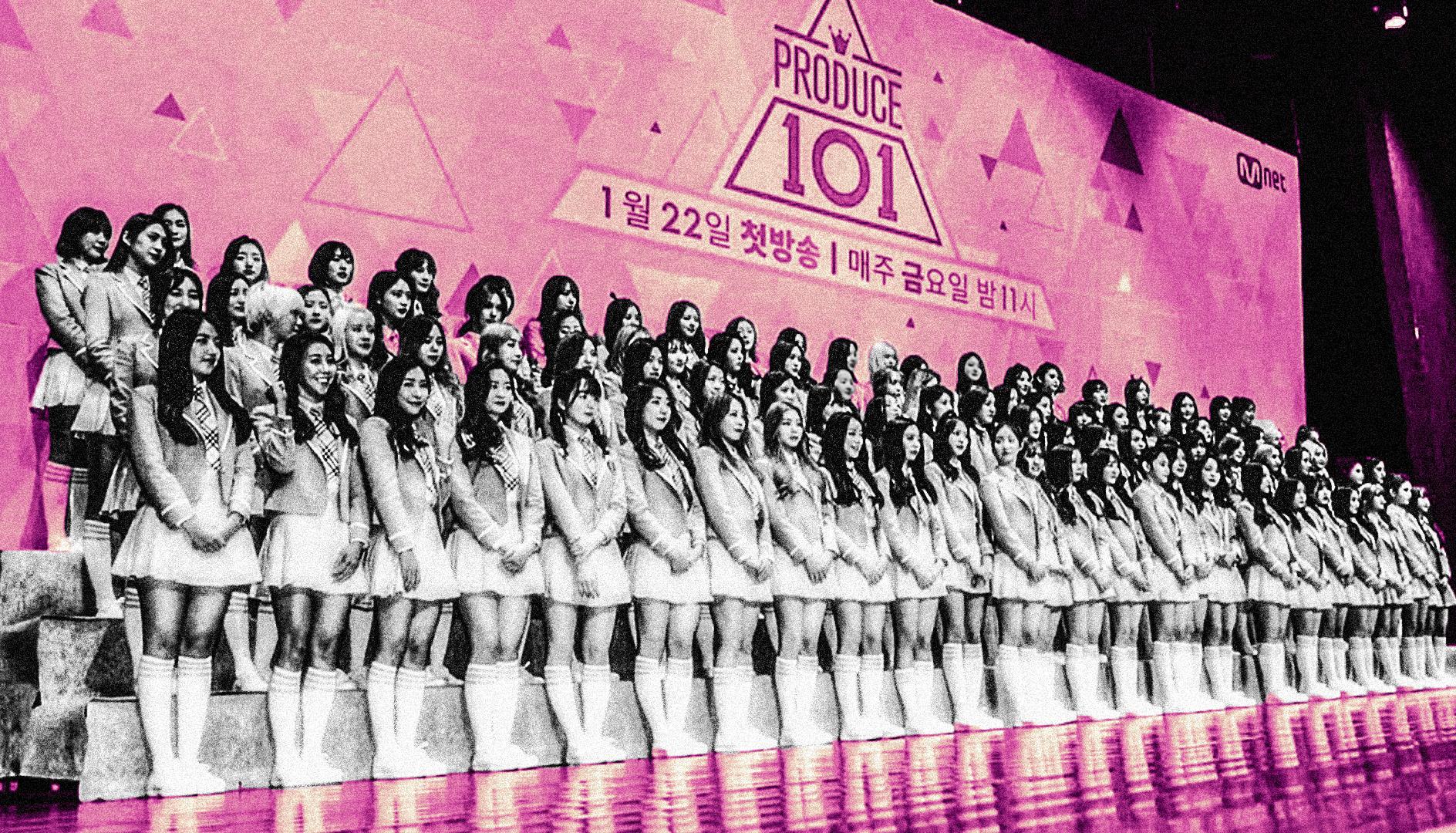
Perhaps the biggest reason is the very nature of the industry: K–Pop thrives on fan interaction with idols, and vice versa. It’s a mutually symbiotic relationship— some may argue it’s parasocial—where a group’s success depends on whether or not their fans like them and choose to interact with them. A strong fanbase is why groups like Girls’ Generation and BTS can sustain their careers, even during periods of hiatuses. Platforms like WeVerse, Bubble, and formerly VLive feed into this symbiotic relationship by offering fans a view into what their favorite groups look like
Historically, groups are made solely at a company’s discretion. Members of Girls’ Generation, Wonder Girls, and Super Junior were all chosen via their company’s selective debuting process, with little input from outside forces. With K–Pop reality shows, the general public is able to have some influence over how groups are made. One of the earliest shows to use public opinion is Sixteen, a little–known program produced by JYP Entertainment and Mnet. The show had 16 contestants, and each week, JYP used a combination of team missions, company trainers’ input, and public votes to eliminate contestants to form the now globally renowned group, TWICE. The show wasn’t a major hit, only managing to crack the top 10 in Korean TV viewership with the finale, but this show, along with other early survival shows like WIN: Who Is Next (which produced WINNER) and KARA Project (which added a member to girl group KARA), showed that the Korean public wanted input in how their favorite groups look like.
Introducing this format to a larger audience boosted the growth of such shows. The biggest success of the K-Pop survival show concept would be Mnet’s Produce series, forming groups like IZ*ONE, Wanna One, and I.O.I. These shows had many more trainees from different companies, who competed in cutthroat evaluations and missions, all vying for a few select spots in the final group. It is these programs that show K-Pop at its best, and its worst.
On one hand, the fate of the groups was determined by viewers via a website, text, or mobile app voting. This system allowed
international fans to participate, ultimately expanding the genre. This move also paved the way for non–Korean members in idol groups; in fact, all three of the groups mentioned above had at least one foreign trainee making it to the final lineup. This dynamic made the groups more marketable to foreign countries, and even inspired spinoffs in China and Japan.
However, such a high–stakes environment also fostered mistreatment and scandals from many behind the scenes. Numerous reports from eliminated trainees spoke out about unfair training conditions, like lack of bathroom privileges and fewer meals, that border on violating basic human rights. The shows were also accused of multiple instances of “evil editing”—in which Mnet intentionally edited contestants in order to sway the audience's opinion. But the biggest controversy to arise from this ultra–competitive process would be the Mnet voting manipulation scandal, where the executives of the Produce and Idol School series were found guilty of manipulating total vote counts to prematurely eliminate some contestants, and boost others. As it turns out, these survival shows also make lucrative money, with the labels managing the winning group getting up to 50% of profits from the show. The parties involved were later fined and imprisoned, but it demonstrated how companies and external forces are willing to resort to bribery and fraud to influence results.
the international audience, GP999 had 99 contestants, split into three groups representing their native countries of Korea, Japan, and China. To avoid allegations of rigging, the company hired a third-party “observer system” to oversee any vote manipulation. Yet, the show is still plagued with issues, from the continuation of their infamous “evil editing,” to blatant racism to the foreign idols as described by many Chinese trainees. But all these problems seemed not to matter when the show continued to attract audiences. Some shows attract viewers from over 100 countries, all hoping to support the trainees they want to see on the K–Pop stage.
So survival competition shows are here to stay, but what is in the future for a format that harbors both talent and vices? 2023 especially saw an influx of new variety shows such as Queendom Puzzle, R U Next?, and A2K, each with their own unique circumstances and issues. The fair treatment of all trainees should be a priority, and eliminating “evil editing,” as silly as it sounds, would be a big step in ensuring each trainee has a chance to showcase their talents. More rules and regulations, whether through law or third–party observer systems, should be implemented to make sure that the livelihoods of trainees are not threatened. Transparency from the producers would instill more faith in the audience in the process, so presenting vote totals and how they were tabulated would ease some fears. Lastly, if one finds a trainee they like through this highly competitive system, offering support—whether it be voting for them or participating in fan-created events— is a morale booster for the many young idols that undergo this strenuous process.
Despite being involved with such a massive scandal, Mnet subtly revamped the Produce system with Girls Planet 999, and later, Boys Planet. Increasing their focus on
While the survival show system has its flaws, they don’t seem to be disappearing anytime soon. But at the end of the day, watching the stories of trainees hoping to debut is inspiring, and their work ethic and efforts should not be understated. Becoming a fan of a survival–show–made group is a unique experience, and one can only hope that increased pressure from fans demanding fairness and transparency will one day make this grueling system a more equitable one. k
Numerous reports from eliminated trainees spoke out about unfair training conditions, that border of violating basic human rights.
The studio has the movie world in its hands and is making all the wrong moves with its new surge of power.
BY EMMA HALPER Illustration by Insia HaqueBy now, Greta Gerwig’s Barbie requires no preamble. The film has not only grossed over $1.4 billion at the worldwide box office but has become a cultural phenomenon of proportions not seen by a major studio film in years. “Hi, Barbie!” and “I am Kenough” have already entered the mainstream lexicon, and the film’s soundtrack has been successful, with Dua Lipa’s “Dance the Night,” Nicki Minaj and Ice Spice’s “Barbie World,” and Billie Eilish’s “What Was I Made For?” all charting on the Billboard Hot 100. Along with Christopher Nolan’s Oppenheimer, Barbie has been hailed as a saving grace for the film industry: an original story backed by a big–budget studio that features two movie stars and has delivered both critically and commercially. The response to Barbie has been so extreme that naturally the studio behind the film, Warner Bros., has been contemplating how Barbie can be utilized in the future to strengthen their brand. The film has been lauded for its originality and female–driven story, yet Warner Bros. seems less interested in parlaying the success of Barbie into a studio culture of original auteur features than in creating a Mattel Cinematic Universe.
This week, Mattel CEO Ynon Kreiz told Deadline that Barbie “is part of a holistic
strategy, a multi–year strategy, to capture value from our intellectual property,” a sentiment that Warner Bros. seems to agree with. There have already been industry reports that Lena Dunham will be directing a live–action Polly Pocket film starring Lily Collins, and a Barney film with Daniel Kaluuya. A long list of Mattel properties on Warner Bros.’ radar for live–action adaptations include Hot Wheels (with J.J. Abrams attached), American Girl, Major Matt Ma-
son, the Magic 8 Ball, and even UNO. Greta Gerwig herself was also being asked about the potential for a Barbie sequel in a recent interview with The New York Times
Of course, not all of these films will be made—or even see the light of pre–production. However, this gut instinct by Warner Bros. to immediately draw up a list of existing Mattel properties that can also be made into films exemplifies the omnipresence of intellectual property in today’s

filmmaking, and the idea that films rooted in IP are too big to fail. It should be noted that this is a misconception by the studios; this year, Ant–Man and the Wasp: Quantumania failed to break even at the box office, and Indiana Jones and the Dial of Destiny was reported to potentially cost Disney $100 million in losses.
The simultaneous ascension of both comic book film franchises and prestige television in the early 2010s (The Aveng-
ers was released in 2012; Netflix’s House of Cards premiered in 2013) spelled trouble for the film industry, which quickly found itself producing big–budget films stemming from existing IP and not much else. Marvel, DC, Mission: Impossible , Star Wars, and live–action Disney remakes dominated the last decade’s box office, sucking up not only studios’ budgets but their entire release schedules and content strategies. In 2010, at the domestic box office, there
were only 12 films in the top 25 that were not sequels, prequels, or remakes; in 2019, the year before COVID–19, there were only four: Jordan Peele’s Us; Quentin Tarantino’s Once Upon a Time in Hollywood ; Todd Phillips’ Joker (which is an “original story” within the DC universe, and just completed filming for its sequel); and Rian Johnson’s Knives Out, which in 2022 had a Netflix sequel.
Given these numbers, it is understandable that studios are wary of investing in a slate of completely original stories—even Barbie, with all of its bold swings and idiosyncrasies, is still a film about perhaps the most famous doll in history. The temptation to franchise, to bet on the sure thing, is a strong one for movie executives, especially in an industry currently struggling with strikes and the competition of television and Internet content. However, Barbie and Oppenheimer have proven that audiences are receptive to original storytelling and, in fact, may be craving it.
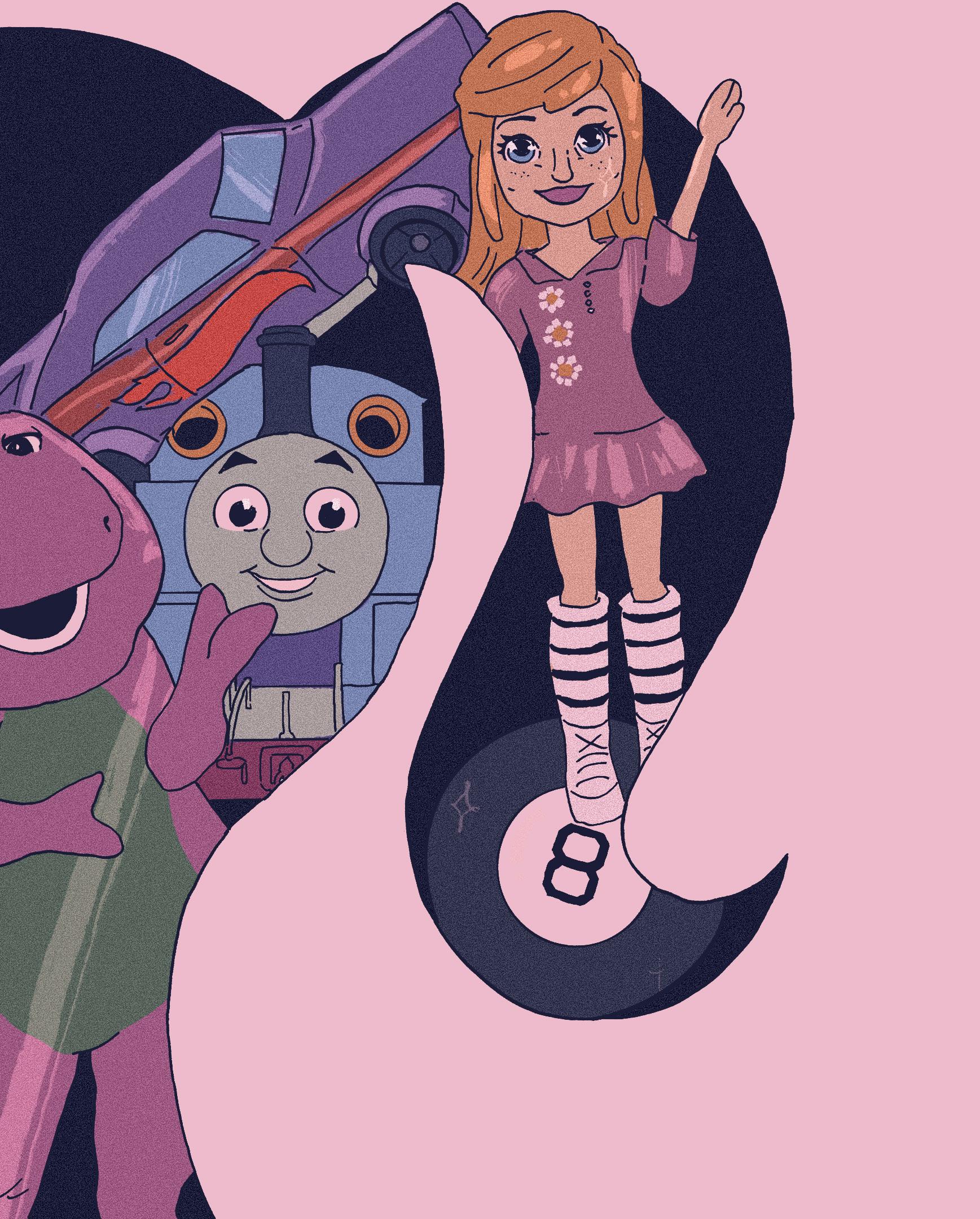
Warner Bros. and other major studios whose power has been chipped at by the forces of Netflix, Amazon, Apple TV+, and independent juggernauts like Neon and A24, are not exactly in the position to play it safe. In the aftermath of COVID–19, the movie theater experience has not regained the adoration of the public, and many film markets have all–but vanished (the mid–budget “adult drama” has almost completely transferred to limited series). At this critical moment in the film industry, maybe playing it safe is a sure way to fail, or at least to continue to decline as the most popular and essential art medium in the world. Warner Bros. has the opportunity to separate itself from the other studios and create a new era of Hollywood storytelling. It is now up to their executives to decide whether they want to be “the studio that brought you Barbie” or “the studio that brought you Barbie, Barbie 2, Barbie 3 ” and nothing else new.
Similar to bringing horses to water, you can bring a film studio a hit, but only those with power can decide how to best maximize that hit and use it to propel the industry forward. k
What counts as accessorizing, and what can our accessories tell us about each other?
 BY ANJALI KISHORE
Illustration by Ani Nguyen Le
BY ANJALI KISHORE
Illustration by Ani Nguyen Le
Coco Chanel famously said, "Before you leave the house, look in the mirror and take one thing off."
Coco sure knew her tweeds and pearls, and the archetypal, streamlined, sophisticated Chanel woman would still probably turn her nose up at many of our cluttered wrists and jangling keyrings. But, just as some would argue that Thanksgiving is all about the sides or that the Super Bowl is all about the commercials, accessories are often the key to making a look tick. Before we had any notion of personal style, many of us chose accessories as a channel for expression: homemade friendship bracelets denoting our strongest ties, pierced ears looked upon with envy as a signal of growing up, playground weddings under the slide, complete with a Ring Pop.
If we express ourselves through our fashion choices, accessories are windows to the soul. The choices we make in how we supplement our personal style have always meant more than a simple aesthetic decision, and it becomes only more evident as we grow older. We may have thrown out our Rainbow Looms and string, but accessories still reign supreme as signifiers of our values, relationships, and personalities. In considering the role of accessorizing in self–expression, I found myself considering what, exactly, an accessory is. We may automatically think of bags and jewelry, and certain notable accessories come
to mind in cementing identities: Jackie O.'s sunglasses, Blair Waldorf's headband, or the famous pearls of Audrey Hepburn as Holly Golightly in Breakfast at Tiffany's.
But the concept of an accessory is a blurry one and much broader than one might expect—depending on the context, accessorizing could either get you in Vogue or sent to jail. Teen drama Gossip Girl 's bad–boy–heartthrob Chuck Bass, in discussion with his college runaway stepsister, says of members of their elite enclave of Upper East Side society, “For people like us, a college degree is just an accessory. Like a Malawi baby or a poodle." Clearly, accessories occupy a space in the cultural consciousness beyond fashion—so, what makes an accessory, and how do unorthodox accessories manifest as modes of expression?
One typical way of defining an accessory is "an item used to contribute, in a secondary manner, to an individual's outfit." In style bibles like Vogue and Women's Wear Daily, this takes on a conventional spin: articles concerning accessories discuss
formation Institute, an accessory is "some one who aided or contributed to the commission or concealment of a crime"—less driving cap, more getaway car–driver. Your enabling friend covering your tracks on a messy night is an undeniable accessory to what she'll never tell. The neon–orange–strawed Dunkin cup dangling from your hand is an accessory in itself, indicating the all–important facet of personality—coffee preference—and, possibly, indicating priorities, if said coffee cup is hauled in a few minutes after class begins, accompanied by sheepishly muttered apologies.
There's a particular subset of pieces that offers a framework for the breadth and significance of the accessory: the status symbol, a term used to describe particular pieces or possessions that "indicate a person's wealth or high social or professional status." Status symbols have ranged from expensive pieces of jewelry and elusive party invitations—more archetypal ex -
pressions of social or economic status—to more abstractly impressive, "If you know you know" assets like designer dogs or a particular kind of license plate. A status symbol isn't necessarily the most expensive or exclusive of things, but given the social environment in which a certain accessory is brandished, something that seems relatively insignificant can hold much more weight than its tangible value.



This phenomenon is well–documented in literature, particularly social portraits such as Edith Wharton's " The Age of Innocence ", F. Scott Fitzgerald's " This Side of Paradise ", and several of Jane Austen's novels, in which the positions of characters are often only slightly differentiated based on how they accessorize. The style of Wharton's Madame Olenska, expressed by things like a velvet robe and an eagle–feather fan, signifies her position as an outsider in New York society. For Fitzgerald's Amory Blaine, having slicked–back


hair and tortoise–shell glasses indicates membership of the social category of "slicker": someone who "had brains, social brains, that is, and he used all means on the broad path of honesty to get ahead, be popular, admired, and never in trouble." Like Blaine and Wharton's protagonist Newman Archer, we often imbue value in very particular appendages of style and use these loosely defined accessories, consciously or not, as symbols of their wearer's values and place in the world.





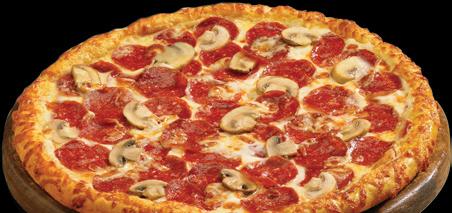
The idea also translates to college campuses. A weekend's raggedy wristband stubbornly hanging on may tell you where someone has been and where they're going. When you see someone walking with corded earbuds vs. AirPods vs. over–the–ear headphones, you may find yourself inadvertently adjusting your conception of who they are. A perfectly average person who you then notice is riding an electric scooter suddenly becomes something different. To the prophets of pop culture









(or teenage girls on TikTok), the definition of accessory expands—girls can't leave the house without an emotional support water bottle, which invariably incorporates itself into every outfit. Many use these ever–present water bottles as blank slates to sticker into oblivion, telling you all about the person carrying it without having to exchange a word. Computers, too, often find themselves falling into a sticker frenzy and coming out the other side as bona fide accessories, indicators of personality and taste.




These things wouldn't traditionally fall under the category of "accessory," but in many ways, they serve the same purpose of contributing peripherally to our understanding of a person, expressing individuality in a way that we typically would reserve for personal style. Even if we don't realize it, we've encoded these "accessories" with certain significance and meanings and use them to understand the world around us. k

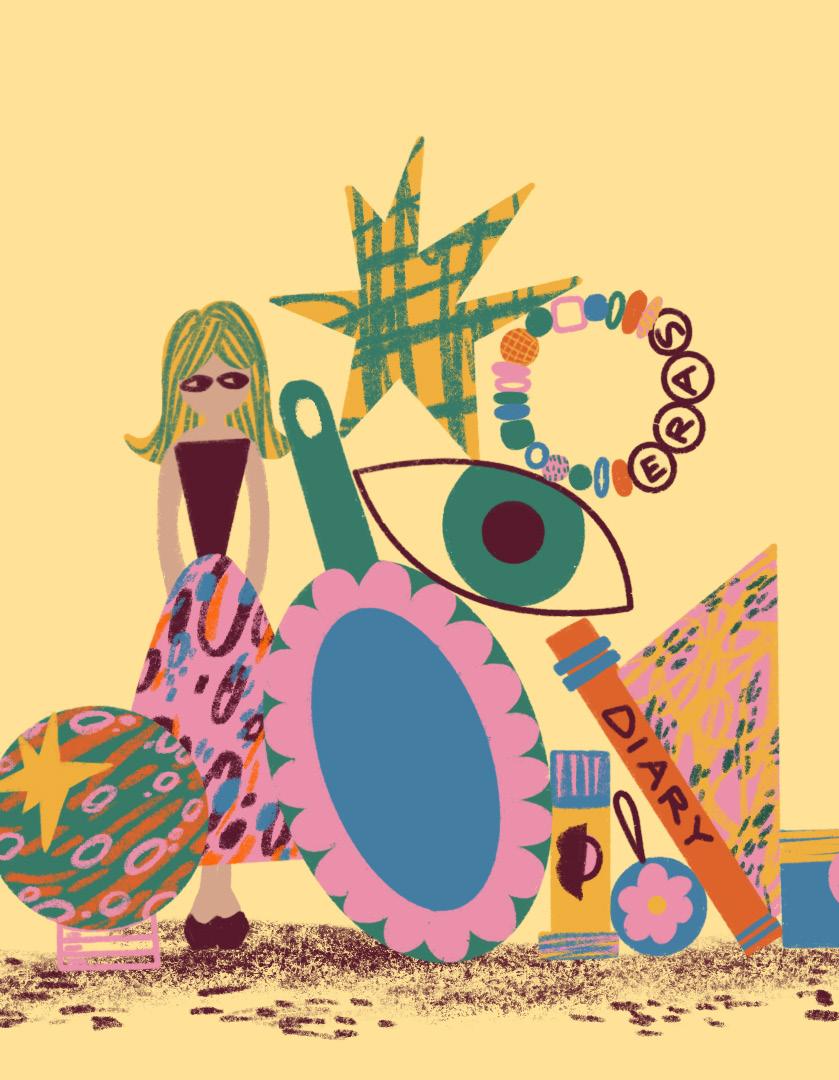
This summer was, undeniably, one for the girls; the streets were swathed with all shades of pink after the release of filmmaker Greta Gerwig’s impossibly highly–anticipated Barbie, pop icon Taylor Swift’s Eras Tour brought colorful summer–camp–style beaded bracelets and frothy fantasy adult dress–up to the cultural main stage, and a TikTok–fueled tidal wave of trends hopped off–screen as we packaged our walks, dinners, and aesthetics under the umbrella of all different kinds of “girl”–iness. Female joy and community felt tangible this summer more than ever, and in many ways it feels like a relief a long time coming: Finally, the economic, cultural, and social space for women to express and enjoy themselves doesn’t require any kind of fight or justification. This time, the magnitude of the forces embedded in these creative and cultural celebrations of a collective girlhood experience speak for themselves.
Swift’s tour alone brought an unprecedented economic boom to every city it visit-
ed; HITS Daily Double estimates that while, in general, $100 spent for an average concert tickets generates an additional $300 of spending on accommodations, meals, and more, each $100 spent the Eras Tour generated somewhere between $1,300 and $1,500 in so–called ancillary spending. The tour is shaping up to be the biggest in history, projected to surpass Sir Elton John’s Farewell Yellow Brick Road Tour (currently history’s largest grossing tour, at $939 million) in revenue. Reaching $1 billion in ticket sales is practically an inevitability for the world-
wide tour with still a year left to run.
The unprecedented global economic impact of Eras (“If Taylor Swift were an economy, she’d be bigger than 50 countries,” says Dan Fleetwood, president of research firm QuestionPro Research and Insights) gives critics and the cultural milieu no choice but to take Swift as an artist, and the subculture surrounding her work, seriously. Themed outfits, bead bracelets, and heart–shaped sunglasses may have seemed longer scoff–worthy to a staid worldwide economic institution which hardly has room in its culture
and what it means when an identity becomes commercialized.
for women, let alone girls. But once these cultural touchstones become part of one of the most stratospherically successful commercial entities to sweep the planet in all of entertainment histories, it’s impossible to ignore the significance of women and girls as consumers, and the potential that tapping into the rich culture that women have collectively created amongst ourselves may hold for corporations and other profit–seeking vehicles.
On a similar token, we saw Greta Gerwig’s Barbie absolutely demolish the box office, surpassing the elusive billion dollar mark, which only 53 films in history have done. Gerwig, a fast–rising Hollywood wunderkind whose success reached new commercial and cultural heights with Barbie, has made a career of interrogating and examining girlhood in all its rifling complexity. Little Women and Lady Bird, her two forays into solo filmmaking, earned multiple Academy Award nominations, and led to Gerwig becoming one of seven women in the history of the Oscars to be nominated for Best Director (as she was in 2018 for Lady Bird). Gerwig’s Barbie stands out in her repertoire for its commercial–box–office bent: While her earlier work was highly critically acclaimed and film festival gold, her projects had been notable for their rich texture and gorgeous storytelling style more than their grandiosity or commercial success. Barbie launched Gerwig into a new land, a land of hot–pink hot commodities. A glitzy, couture–heavy press tour saw star Margot Robbie in outfit upon outfit heard ‘round the world, and every company under the sun seemed to be seeing pink (hairbrushes, froyo, brightening serums, oh my!). Barbie was artistically adept enough and hardly a frothy, insubstantial flick; however, the film itself seemed to be besides the point. Rather than the press surrounding the film as a central node, it seemed that Barbie was one pin on a huge, Mattel–branded bulletin board, strung together with hot pink. Whatever anyone’s thoughts may be on the film and Barbie Land itself, the cash–happy undertones of the entire affair were impossible to miss in the real world.
As much as I enjoyed basking in the sum-
mer of girlhood, with these two events fulfilling childhood dreams I may have had about seeing pink everything and hearing Taylor Swift songs on every radio station, it’s impossible not to question what feels like an abrupt yet seismic shift in cultural attitudes, driven by commercial and corporate interests, or at least amplified in that manner. Of course I enjoyed elements of the visibility Barbie brought to the paradox of womanhood, and it felt rewarding to feel as if my experiences were reflected in such large cultural arenas as they were this summer. Swift’s success as a female artist is beyond incredible to see, and a hit Barbie film being directed, written, and produced in part by women means great progress is being made in Hollywood, to be sure.
The thing that interests me is this: How much of this visibility and appreciation is superficial, and resultant of largely male corporate interests co–opting the female experience to tap into an incredibly valuable consumer market? Yes, women have had more of a hand in the telling of our stories than ever before, but in an eerily self–aware subplot of Barbie we see that the identity and impact of Robbie’s titular character, Barbie, serves to benefit an all–male C–suite at Mattel. How close is that to reality?
We’ve seen causes and identities co–opted before; in 2020 as the Black Lives Matter movement was catching momentum like wildfire, countless corporations made themselves a part of the conversation in public while their internal practices and business impact failed to serve the communities they supposedly supported. Pride month “merch” peddled by corporations has become the butt of its own joke, and environmental and sustainability measures brandished on labels like medals by companies often lack the institutional backing to create real change. Yet there is an economic benefit to being socially responsible, and joining in on conversations such as these; the twenty–first century consumer is drawn to put their money where their mouth is—so to speak—and spend in alignment with their values. Thus, activism is in.
Now, let me stop for a second and acknowledge this: The visibility gained by corporations shedding light and acknowledging difficult issues such as race, gender, and climate movements is nothing to shrug off. It is incredibly impactful to have the economic engine of America on the same page as its lifeblood—the activists—on any level, and there is also no small amount of corporate faux–pas during these critical cultural moments that is sincerely well–intentioned, even as the water may be muddied by larger dynamics at play.
But companies are companies, and we are their customers; for all the intermingling of business and identity that the American worker and citizen faces, it can be easy to feel lulled into a sense of security when it feels as if you and the things you are buying are in alignment on some higher level. Yet the fact still remains that the experience that is driving the "Year of the Girl," the passion people have for Taylor Swift songs and Barbie dolls and the fond memories we have associated with dance parties at sleepovers and dress–up as kids is ours. Hollywood studios, Ticketmaster, Mattel, or even FUNBOY Pool Floats (who have a special pink float out now): Though times are changing, the upper echelons in power within these corporate settings often have intense imbalances of influence along gendered lines. Thus, as much as we love to see womanhood celebrated in a widespread sense, it is and will continue to be interesting to see how the demonstrated consumer power of women and girls may be reflected in brand messaging, and how corporations may tap into the goldmine that is the female experience going forward.
This essay was not produced to be cynical, or to discourage any enthusiasm regarding these hard–won cultural milestones that women have been smashing this summer; however, it is revealing to note how the one–dimensional “Girl Power” that we may or may not be buying into is actually rather prismatic. In other words, there is more to that pink toothbrush than meets the eye. k

In an era of feed scrolling and 60–second videos, no one has any abundance of time to read hundreds of pages in novels such as Victor Hugo’s famous Les Miserables or The Count of Monte Cristo by Alexandre Dumas. But that doesn’t mean that reading is mutually exclusive with our shortened attention spans of the modern age. What if you could read in–depth stories with multifaceted characters and plots in fewer than 100 pages?
Novellas are the perfect length for our modern society with a minimal attention span. They're the ideal reading for a lazy Sunday afternoon, waiting in a restaurant for
your friends, or even a “Read in a Single Sitting” book. Novellas can be finished in a single sitting, immersing you completely in its world from start to finish. This encompassing experience enables the writer to craft resonances and reflections that might fade away in a longer format. As American writer Ian McEwan says, “To sit with a novella is analogous to watching a play or a longish movie.”
Novellas and short stories may seem similar, but they are not equals—cousins rather than siblings. Beyond the length difference, novellas aim to disrupt traditional publishing models. They force writers to think about
the question: What if every word counts? The answer: Novellas are attention seekers, and every word is whittled down to the essential, aimed to grab the reader’s attention. There’s no time to waste.
Novellas are no new phenomenon, with classics like Dickens' A Christmas Carol and Kafka’s Metamorphosis claiming the genre. Yet they’ve struggled to maintain prestige, considered inferior as if their small size has anything to do with their content.
So, why are novellas gaining popularity once again?
In the constant rush of today's world, read-
ers may hesitate to invest money and time in a new book that they don’t have sufficient time to read. Leisure time has decreased in the last few decades, and with it our opportunities to read have shrunk. That’s why readers appreciate the prospect of a "quick read" that conveniently fits into their hectic schedules. The shorter length and affordable price of novellas offer a distinct appeal that can give them an advantage over longer and more expensive books.






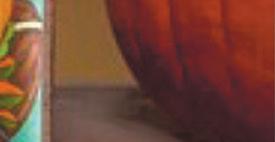

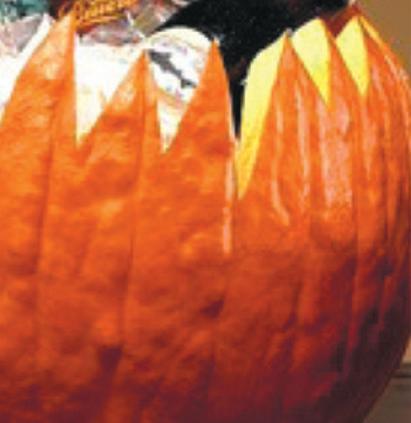



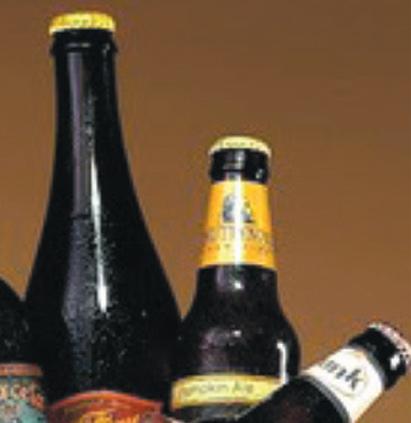





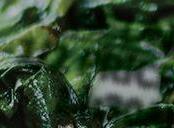











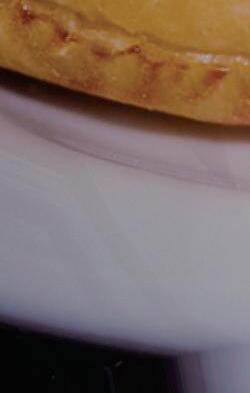







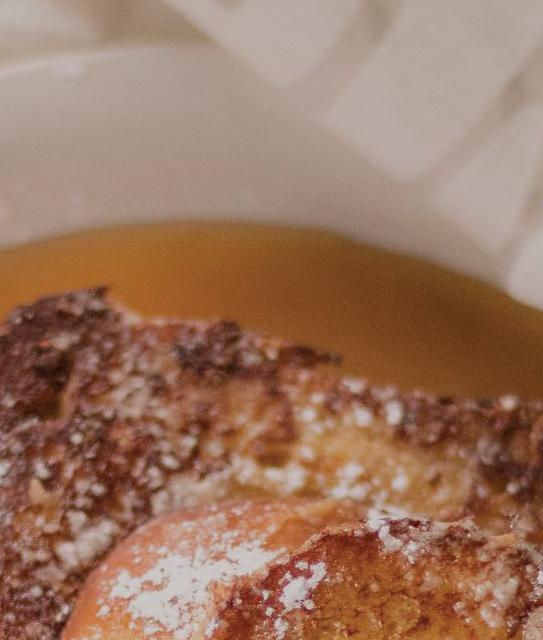
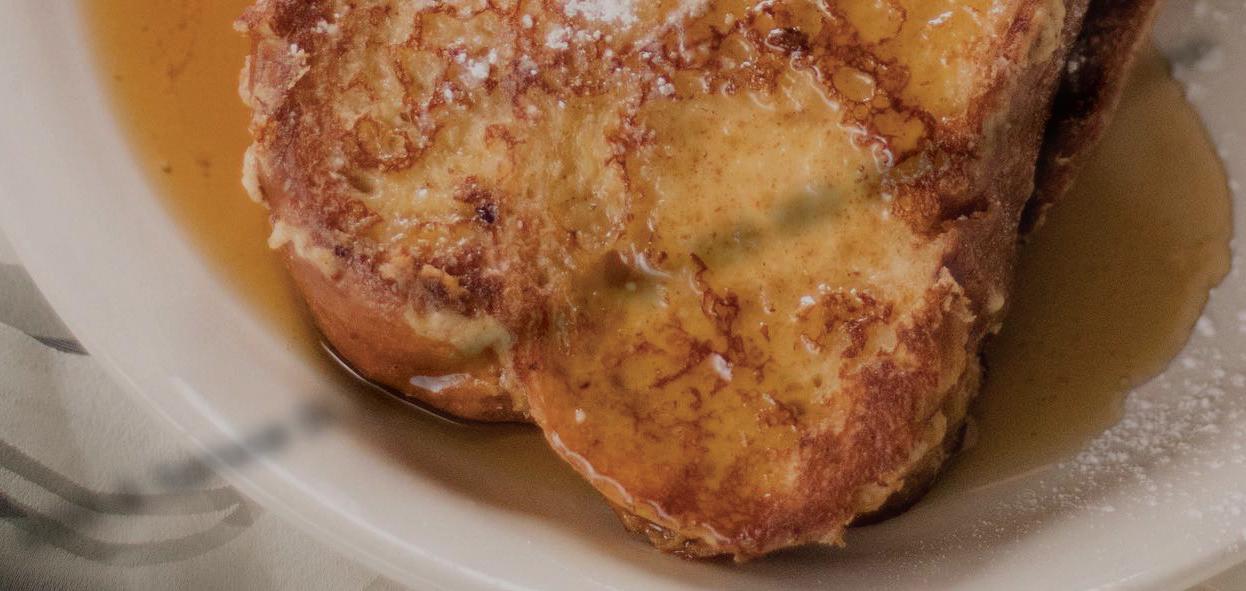
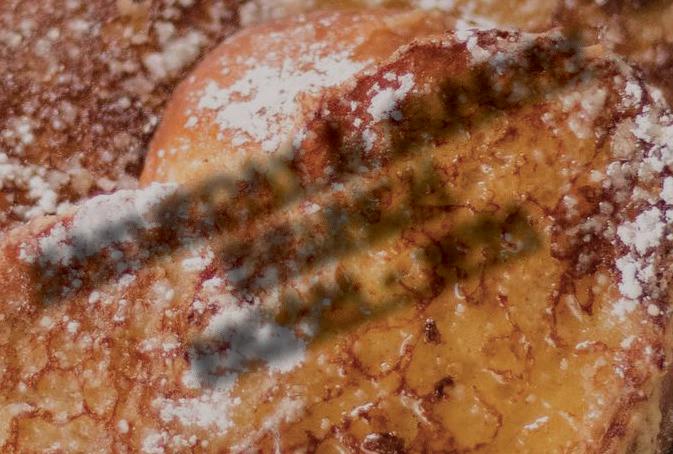








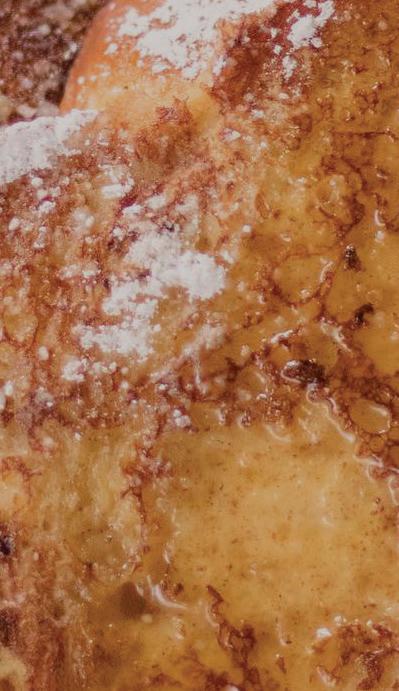



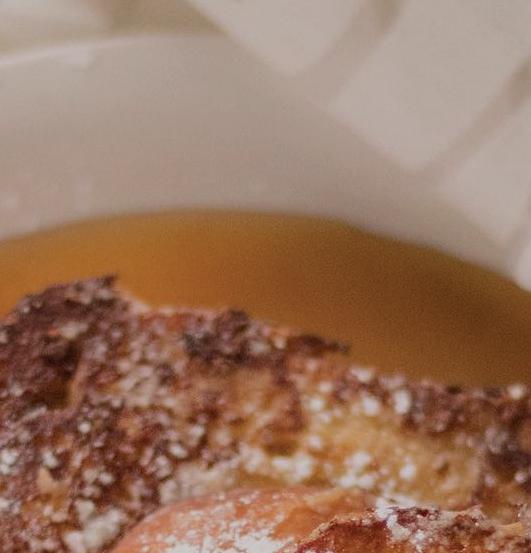
In the advent of the digital literary market place, authors are increasingly able to self–publish online, bypassing traditional publishing companies that often overlook novellas. This has led to a flood of exceptional novellas in the current market able to be accessed with one click. Looking for a good read while you wait for the bus, instead of mindlessly scrolling? Novellas fit in perfectly.

The novella taking over the literary world right now is Foster by Claire Keegan. In fewer than 90 pages, the reader understands more about love, loss, and how grief can be transformed into tenderness and kindness. With an impact far exceeding its size, Foster accomplishes what we expect from exceptional literature: it opens hearts, minds, and surpasses books many times its length.
Another short form of fiction that's putting the novella back on the map is Zadie Smith's The Embassy of Cambodia. Originally published in The New Yorker, this novella is more than a miniature novel fragmented into 21 dainty "chapters," holding the essence of what other writers would need countless pages to convey. Through the narrator Fatou's experiences and observations, the novella explores themes of identity, social inequality, and the complexities of human relationships. The Embassy of Cambodia is living proof that novellas are slim, ambitious, and captivating, proving that size is no measure of their literary prowess.
Novellas have the ability to leave a mark on the literary landscape. Their audience will only continue to grow in the future, and novellas, due to their accessibility and creativity, are a great way to grab their attention. As the media continues to evolve and our free time only shrinks, novellas hold immense potential to shape the future of reading. k




Every morning, pretty much as soon as I wake up, I want to see what’s happened in the world during the (ideally eight, but likely closer to five) hours since I was last awake. Like so many other members of the screen–addicted Gen Z, I turn to my cell phone. But instead of tapping on the blue bird of Twitter, or the rainbow newsstand of an aggregator like Google News, I’ve found myself turning to the orange and white alien icon of Reddit.
Yes; Reddit, the social platform commonly associated with seedy incel forums and perhaps–too–edgy memes, has become my go–to for keeping up with the topics I care about, mostly sports and entertainment. Even though I keep other sources for more serious topics, like politics, Reddit is my default to see what’s going on in the worlds I care about, plus what the average commenter is thinking and saying.
And as it turns out, I'm not alone in this
viewpoint; the majority of other Redditors use the platform for a similar purpose. Despite Reddit not being as widely used as other social media platforms and having a somewhat negative reputation among the general population, those of us who are on the site regularly know and love it.

Frankly, there are plenty of topics I don’t follow, and others where I don’t care what random people on the internet are saying about them. No one can or should care about everything. The positive of Reddit is that one can choose how siloed one wants their content to be. Sure, there’s a popular page—featuring the most upvoted content from around the site—and a feed just featuring daily news.
But the main feed consists mostly of content from subreddits dedicated to topics of your choosing. Therefore, it’s possible to see only posts relating to the types of things you want to see, like sports and entertain-
ment. Additionally, this siloing of interests can keep you away from the shady forums that the world at large often associates with Reddit.
Compare this to Twitter, where people often pontificate on anything on their mind, all of the time. Or consider aggregation sites like Apple News or Google News, where everything is chosen by a faceless, opaque algorithm. Reddit just feels so much more simple and human–curated. On Reddit, the choice of what to see is yours, and not what some computer code thinks can maximize your time on the platform, often through encouraging negative emotions like anger.
Beyond just seeing posts about your preferred topics, Reddit’s comment structure also simplifies much of the discourse. The main point of Reddit—at least for me—is to see people’s comments on and reactions to a question or take posed in a post. And this goes beyond just seeing the comments
Why a site most associated with the Internet’s seediest corners has become my ideal virtual town squareIllustration
others found most helpful first via an upvote and downvote scheme, where the most popular comments float to the top; the site’s unique flair system is also a standout feature. Users can add a symbol, word, or phrase that appears next to their username and gives additional context. On a site where just about everyone is anonymous, the information provided by a flair is often crucial; it expands a user from just a floating username to a floating username with a contextualized personality.
The huge benefit of the flairs is that it allows people to see the biases inherent in someone’s viewpoint, not exactly something a site like Twitter is good at doing. For example, on r/CFB—a subreddit devoted to college football—my flairs are currently Penn and Pac–10 (the conference representing the region I come from and whose games I grew up watching). Whenever I comment or post something, people can see
a specific perspective and where it comes from. So whenever I see Texas and Oklahoma fans getting into it over anything, I know to let it be.
Lastly, Reddit seemingly has a remarkable staying power, with the site itself having been around since 2005. This makes it the same age as YouTube and one year older than Twitter. Now, Twitter is embroiled in controversy keeping users and advertisers, and YouTube is changing its entire platform to be more oriented around short–form video. But Reddit is still thriving, and has maintained the same indie ethos it had when it first debuted.
But what is even more impressive than the overall site’s age is that many communities that you would expect to have fallen out of favor—and are dedicated to topics that aren’t much in the mainstream online discourse—are still going strong. For example, r/TheWire, which is dedicated to a show
which ended 15 years ago, still has 115,000 members and a dozen posts from the last 24 hours.
None of this is to say that Reddit is perfect, because it isn’t. Cyberbullying is present, and can run rampant in some communities, made all the more possible by the anonymity of most users and the prevalence of burner accounts. Beyond that, community moderators—who are pretty much all volunteers—are flawed and there’s no escaping offEEE–topic content (even though there’s a subreddit for that: r/lostredditors). But for me, this doesn’t outweigh the self–curated benefits that the site has brings or the ability to easily identify and move beyond another users' personal biases.
So throughout the rest of today, and when I get up tomorrow, I’m going to keep checking Reddit in order to keep track of what’s going on in my little corner of the internet. k
